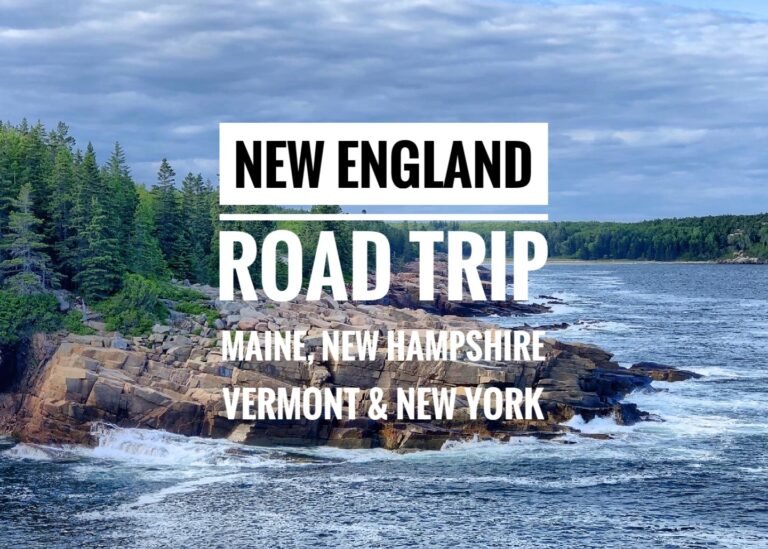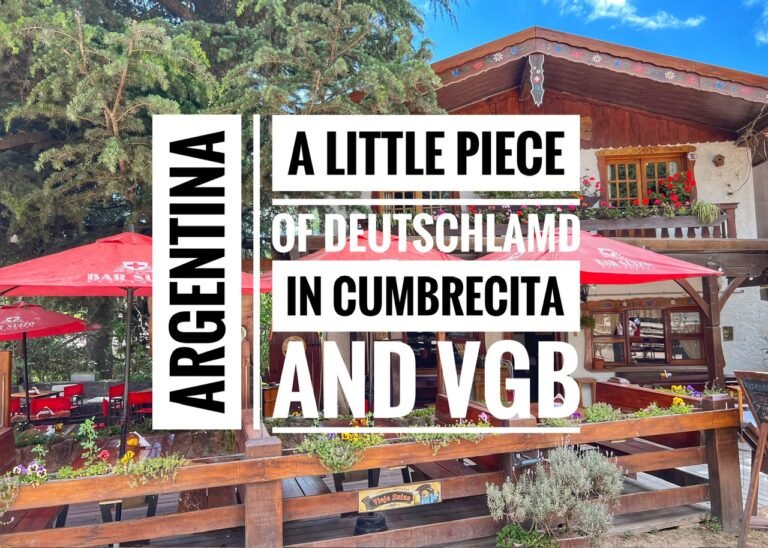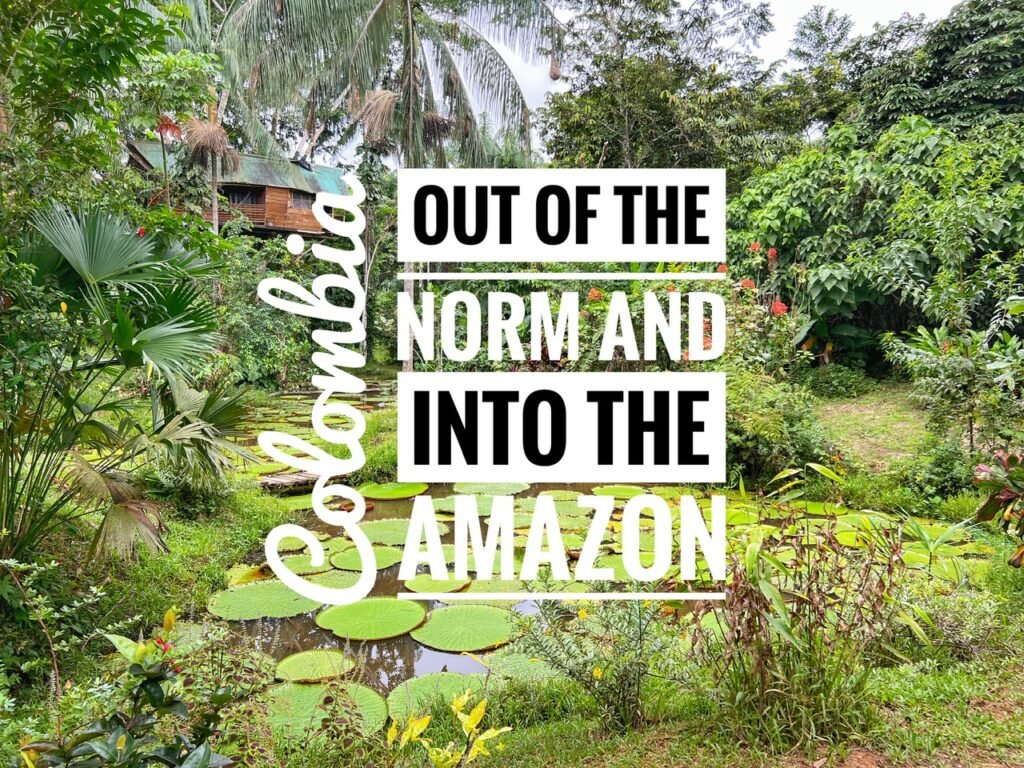
We woke up at 5 in order to get to Leticia in time for our 7:00 tour, (which didn’t leave til 9:00. Oh ColOmbia. 🙄.) We chose a tour through our accommodation that would give us a variety of things: an indigenous tribal and a nature reserve visit, a stop to let monkeys crawl all over us, the chance to see river dolphins, and a visit to Puerto Nariño which is the biggest community in that particular part of the Amazon.
And it absolutely delivered! It was run through Jungle Tours Gamboa and cost about $70 for both of us for the full day, including a stellar freshwater fish lunch, but could have easily been done from Leticia for cheaper.
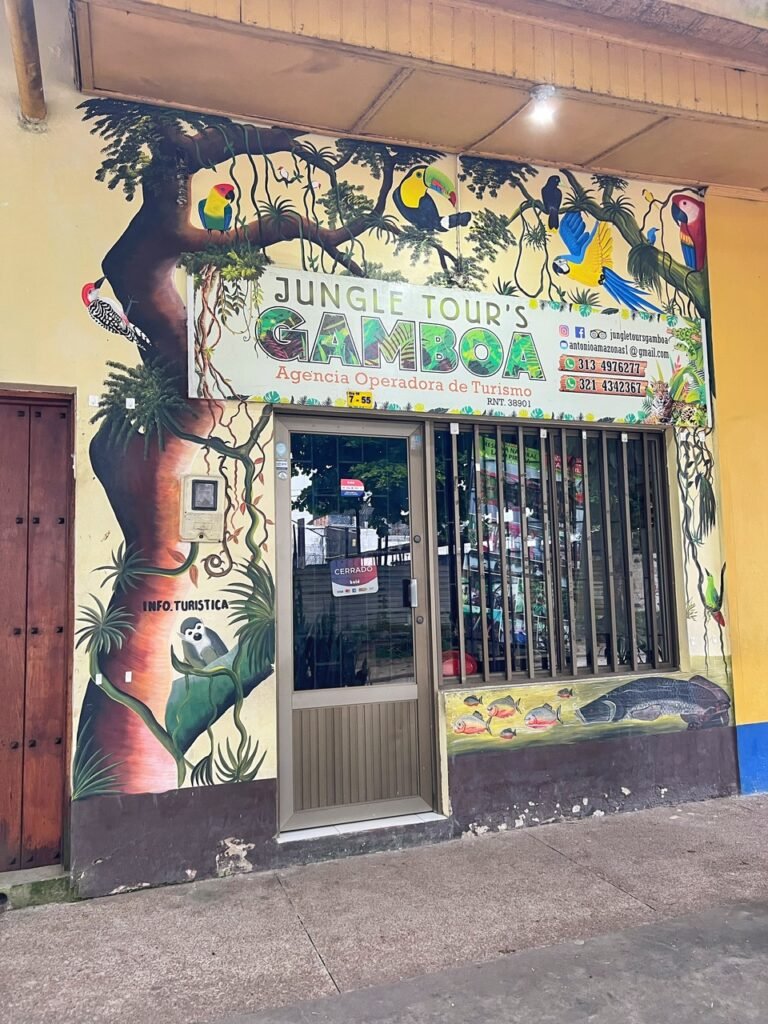
Arriving to our tour agency at 6:45, and being greeted with a cerrado (closed) sign for over an hour. Not the best way to start the day, but ah well, first-world problems!
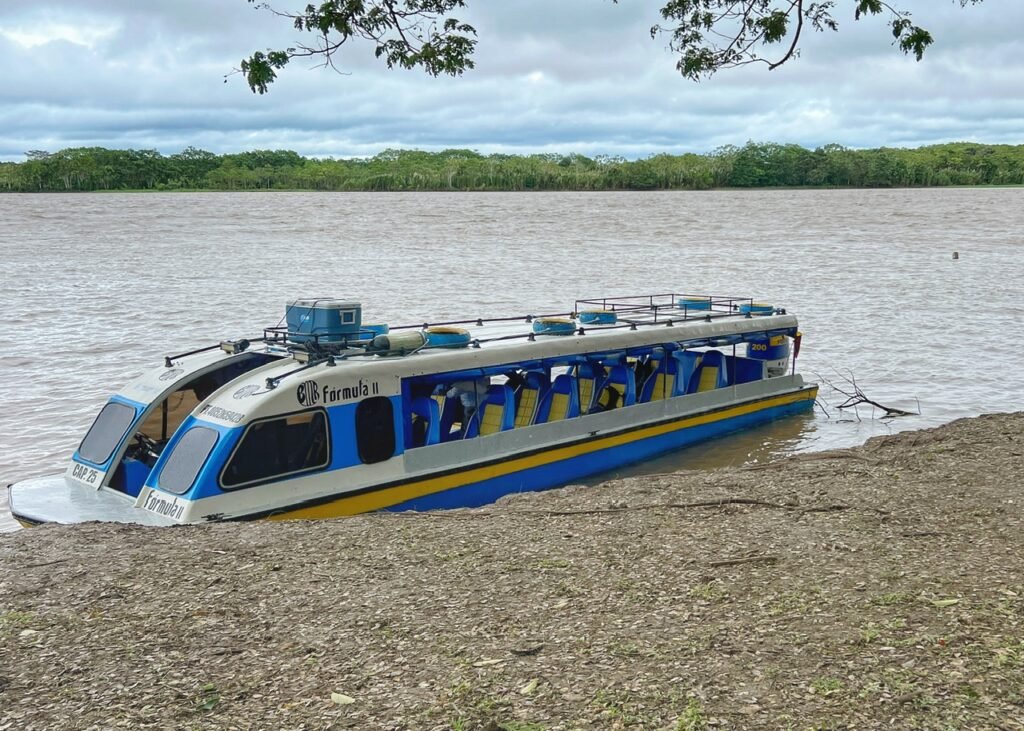
Our boat for the day was fortunately very comfortable considering the number of hours we were on board. Our tour group was large and consisted mostly of friendly Colombians who seemed eager to learn the gringos could kind of speak to them, and a couple well-educated Bogotanos who were also eager to practice their English.
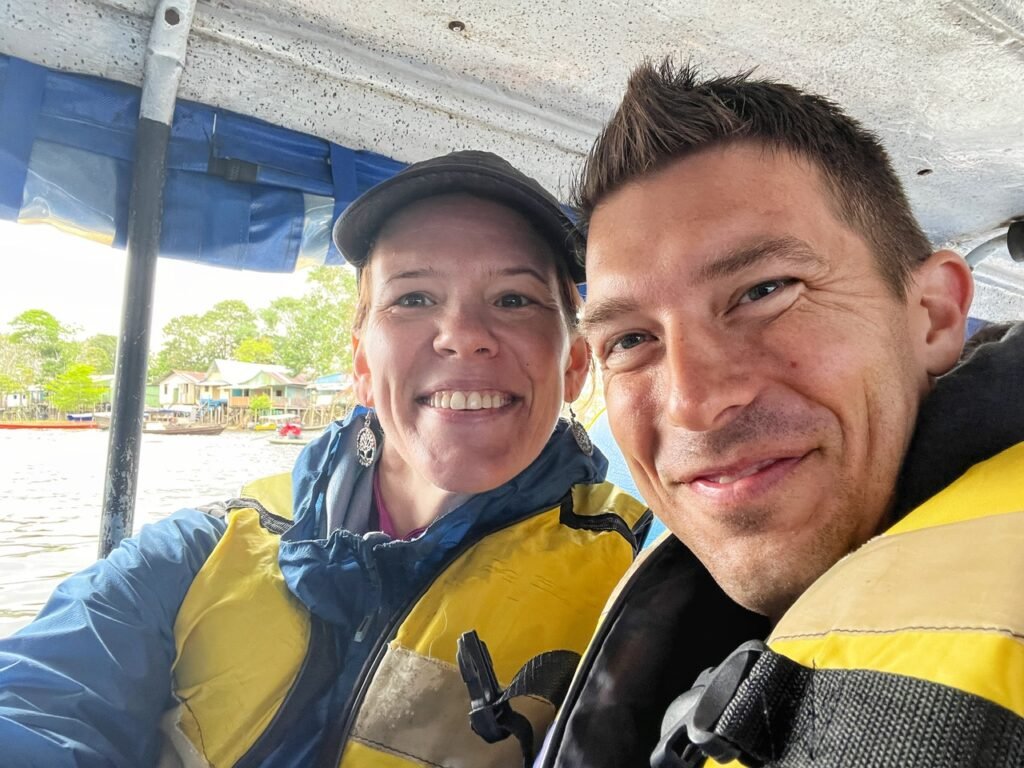
Off we go! And thanks to the low temperatures (low 60’s Fahrenheit/16 Celsius), we were grateful to stay mosquito-free and comfortable in multiple layers.
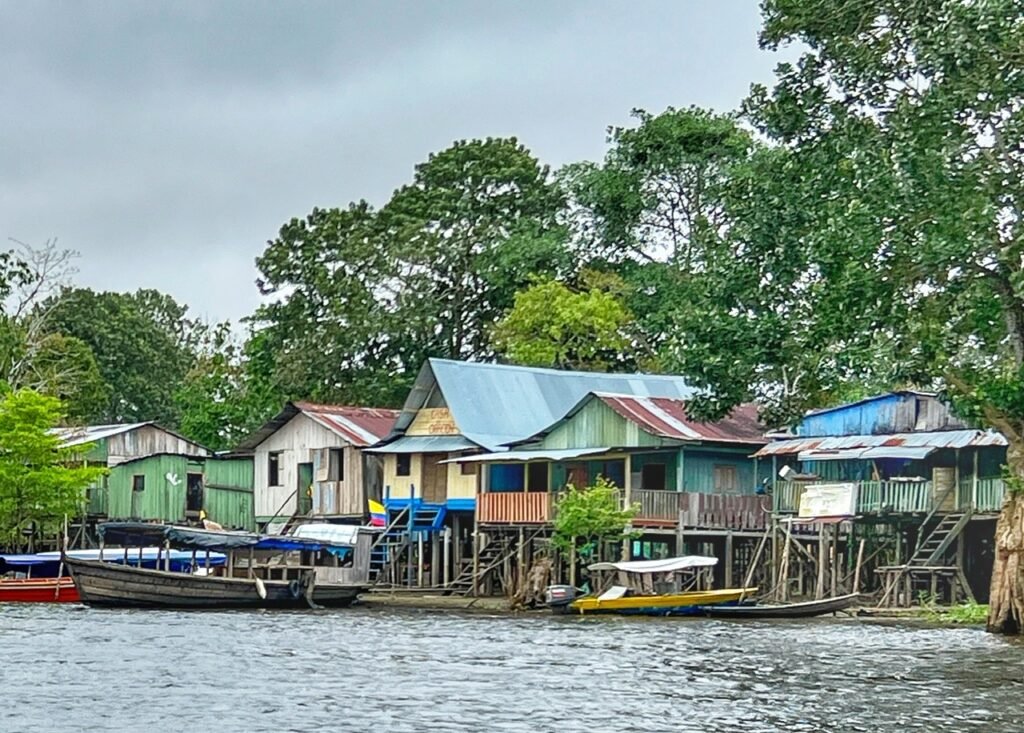
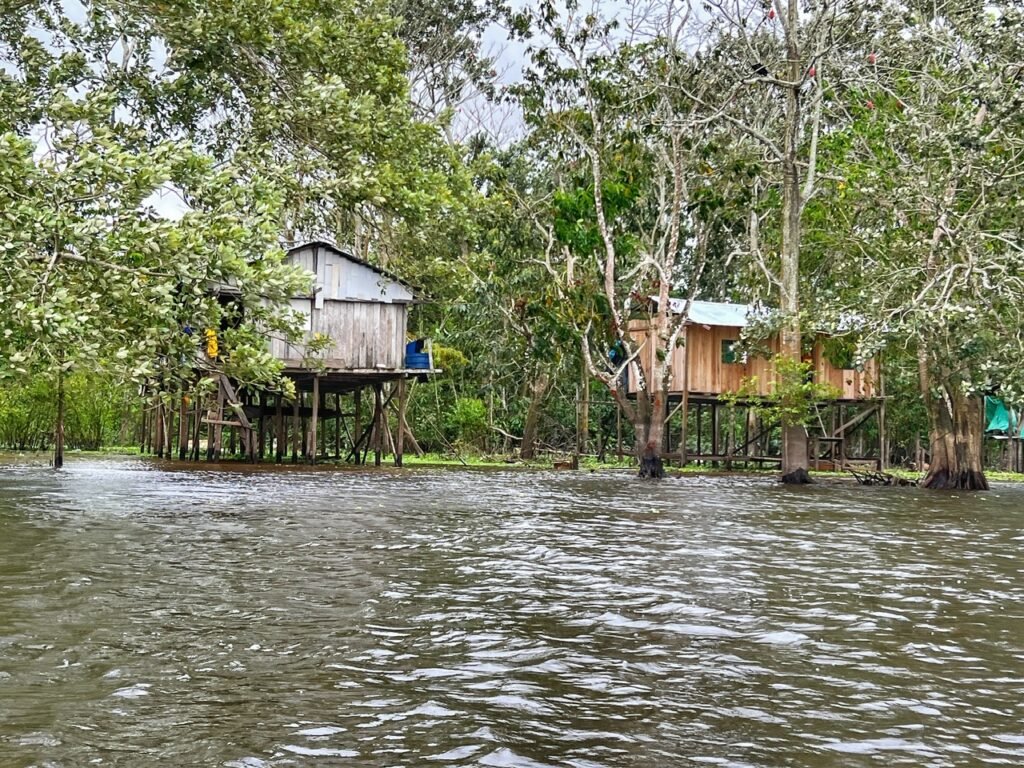
Typical Amazonian riverside communities. The Amazon is over a third of Colombia’s size, equal to the state of California. There are 36 languages in the Colombian Amazon alone.
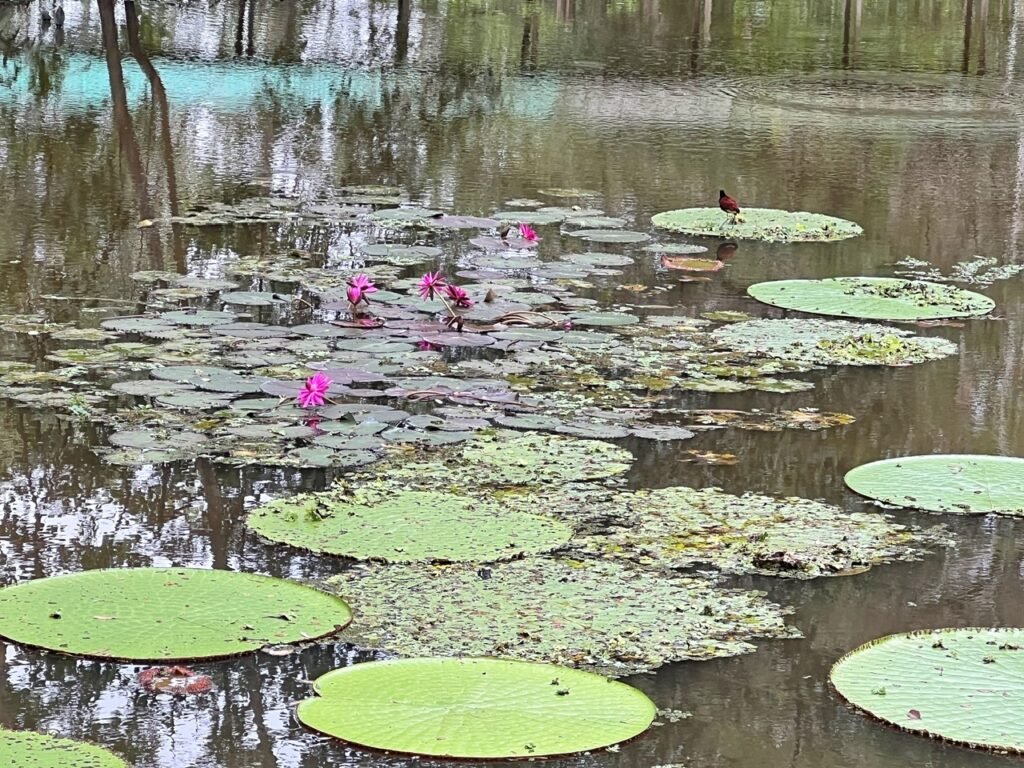
Victoria Regia Natural Reserve
Pulling into the nature reserve of Victoria Regia. According to an informational plaque, here is the story: “A long time ago, young people and beautiful Indies met on the banks of the Amazon River, to sing and live their dreams. They remained admiring the beauty of the moon and the mystery of the stars. They believed that if they could touch the moon or the stars they would become one of them. The youngest and dreamy, Naia, went up to a tree to try to touch the moon, but did not get it. (Imagine that?) The next night, Naia along with her friends went to the mountains with the same purpose, but did not get the desired success. Naia did not give up. A new night came, and took the Amazon and found the moon fluctuating in the waters. The girl thought that the moon had gone to bathe the river, and in the attempt to touch her, she fell and disappeared forever in the middle of the current. The moon felt compassion from the young and beautiful India and transformed it into a giant flower – Victoria Regia – equipping her with perfume and petals that open in the water to receive the luminosity of the moon.”
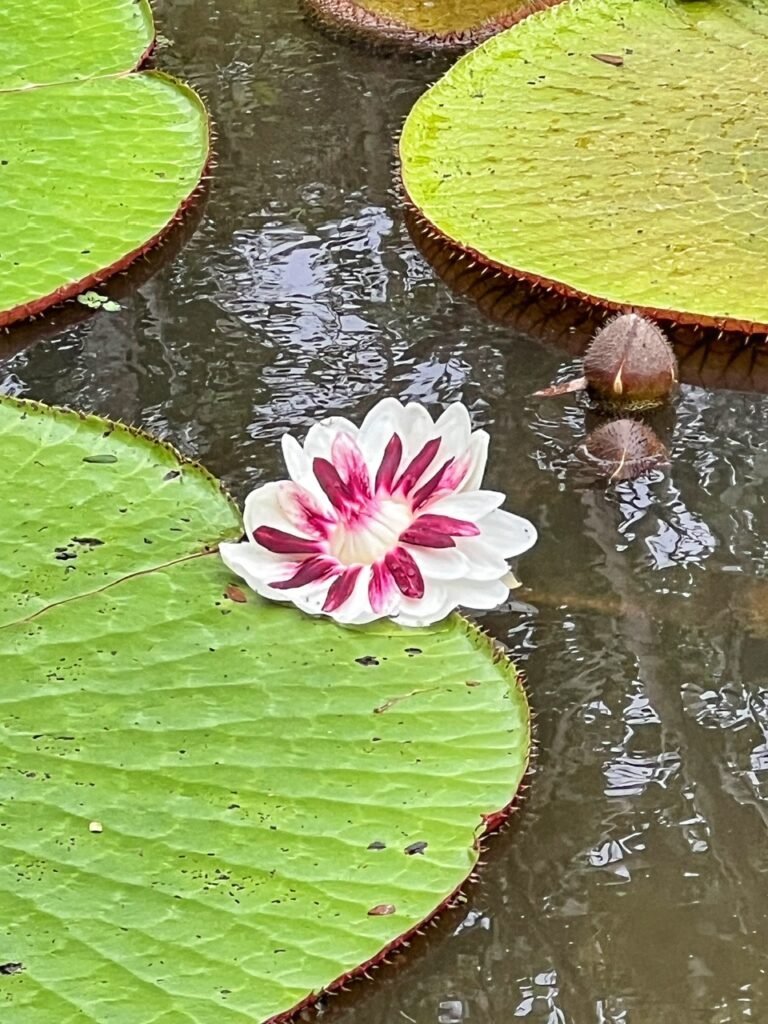
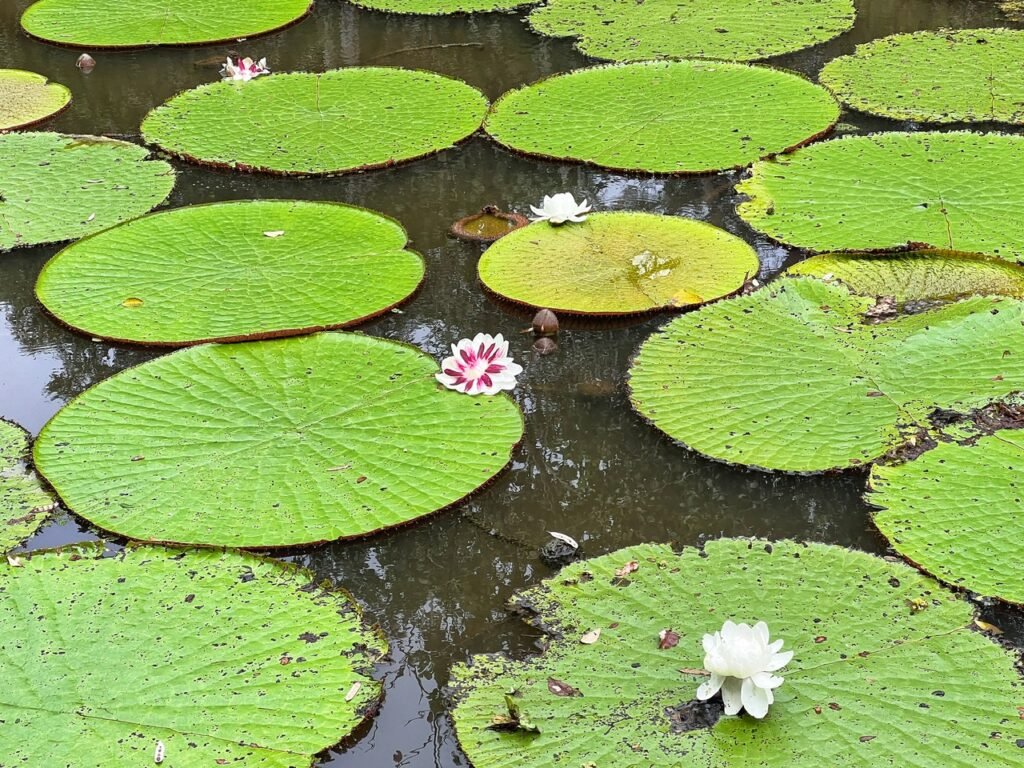
Thus, Victoria Regia displays herself as resplendent Victoria Amazónica lily pads and lotus flowers, which can be some of the largest water plants in the world measuring up to 1.5 meters (5 feet) with roots extending 7 meters (23 feet) below the surface. The lily pads are so big that one theory is they will support the weight to a one-year-old child! However, our guidebook advises not to test the theory out on your offspring. Not a problem for us!! And astonishingly their blooms only have a life cycle of only 9 days before they begin fading away.
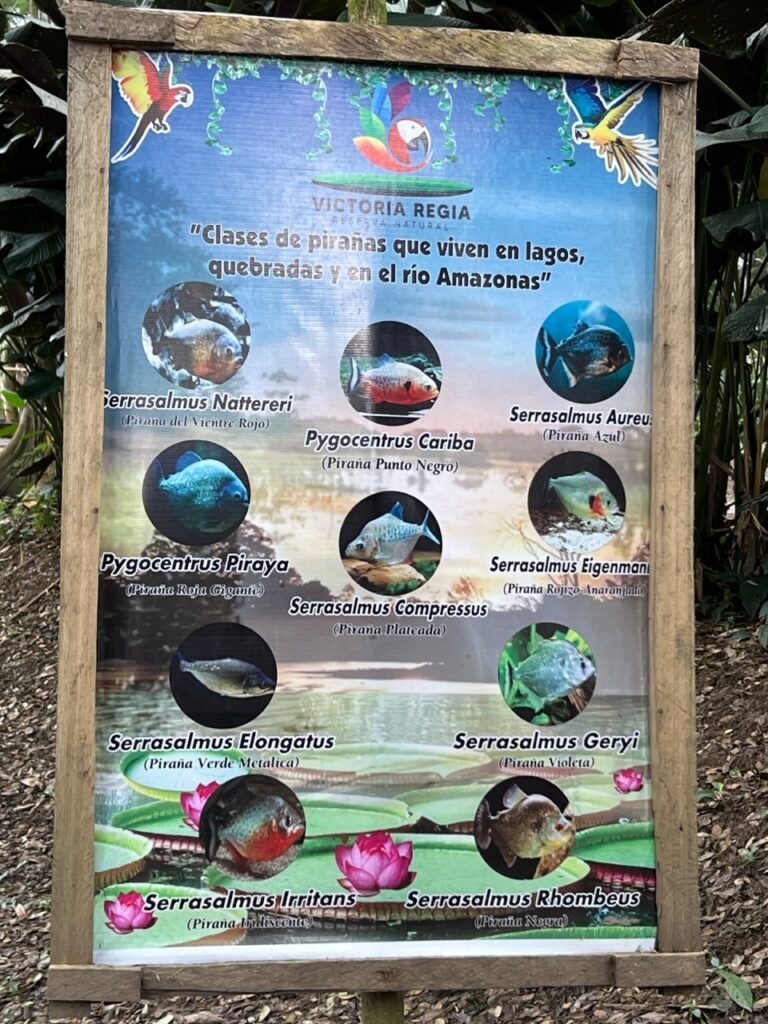
There are at least ten types of pirañas in the waters of the Amazon. Almost all of them are eaten.
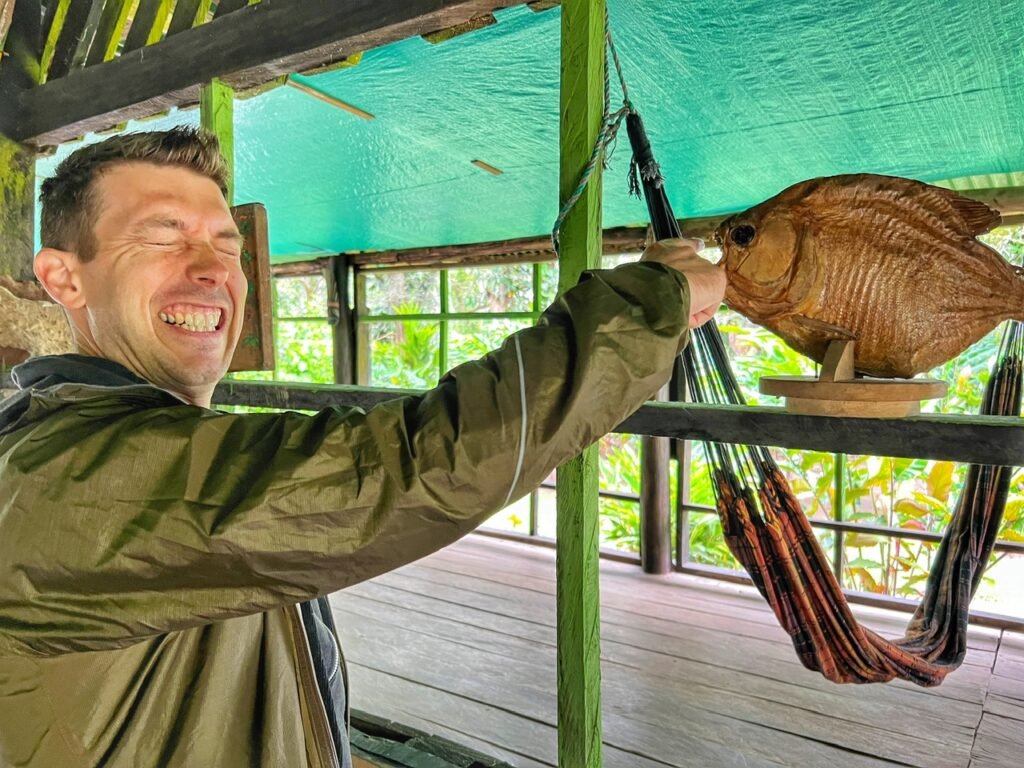
Others eat you.
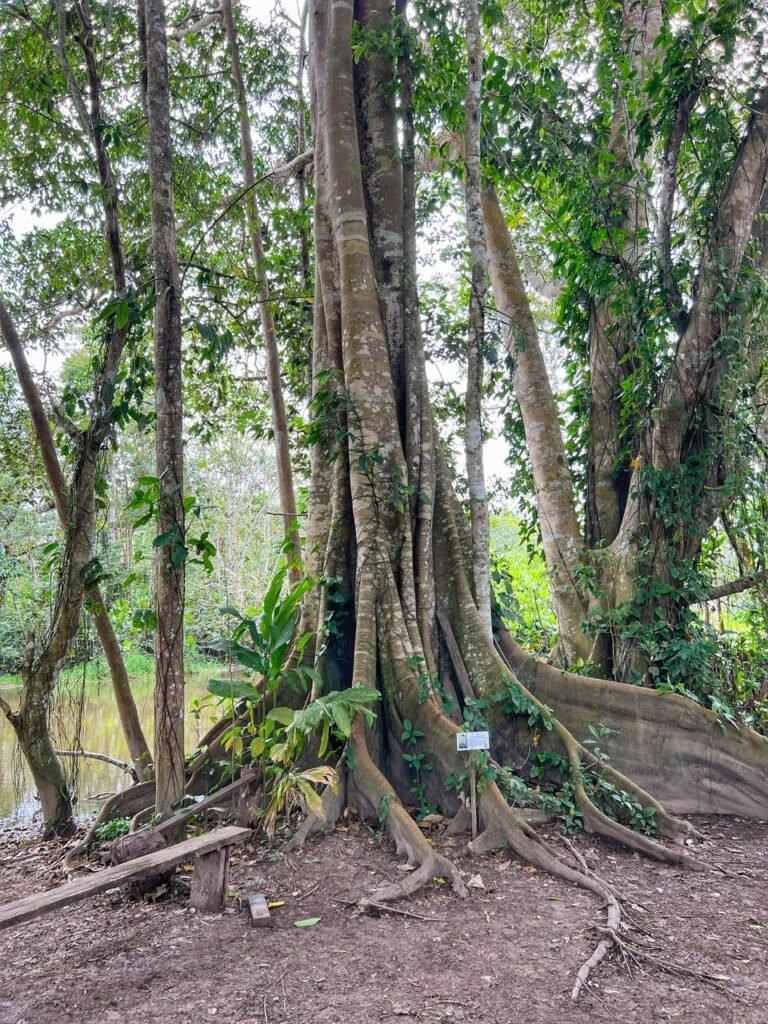
A sacred baby ceiba tree (pronounced say-buh) here.
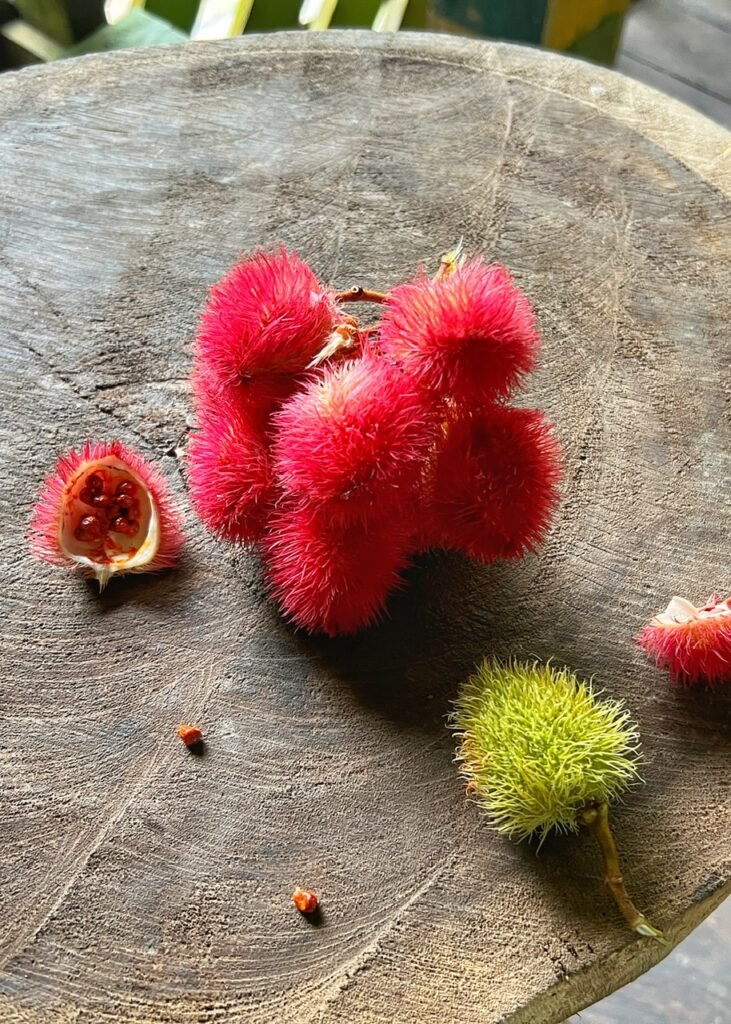
This plant kind of looks like a rambutan, but when you crack it open, it’s more reminiscent of pomegranate seeds. The seeds are used for color, in dyes and in makeup.
Isla de Los Micos
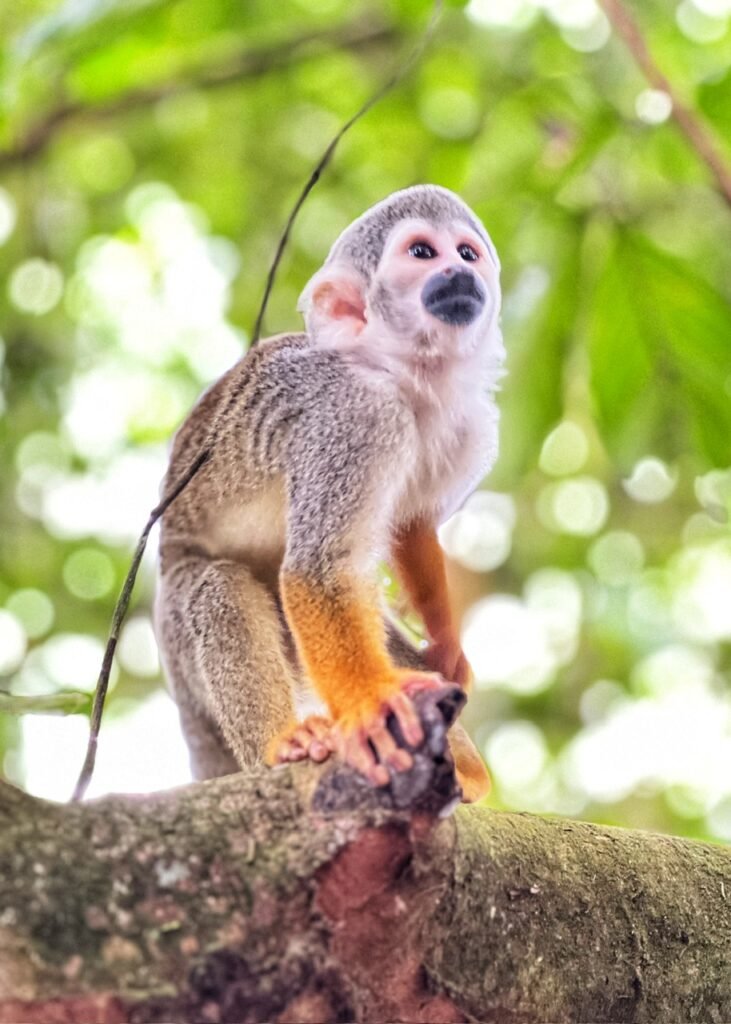
Next we were floated to the Isla de Los Micos, where we provided our services as play toys for the mischievous monkey made even more famous by Marcel, the squirrel monkey, on the first season of “Friends.”
In Colombia, the squirrel monkey or Mono Fraile, is found in the Amazon below 200 meters above sea level. This endearing primate frequently uses the habitats of borders of forests. And they are cute…stinkin’ cute… even when they pounce on you, work you over like a rubber tree or delve into your hair with their soft and grubby little monkey paws.
There is no question that Isla de los Micos (Monkey Island) is by far the biggest tourist trap on the river. Unfortunately, this island was previously owned by hotel giant DeCameron, American Mike Tsalikis, who brought the controversial monkeys to the island in the 70s. At the time, the animals were sadly sold mainly for experimental and exotic animal purposes, but experiments were also carried out on animals at the site. Thankfully this practice stopped as of the 1990s.
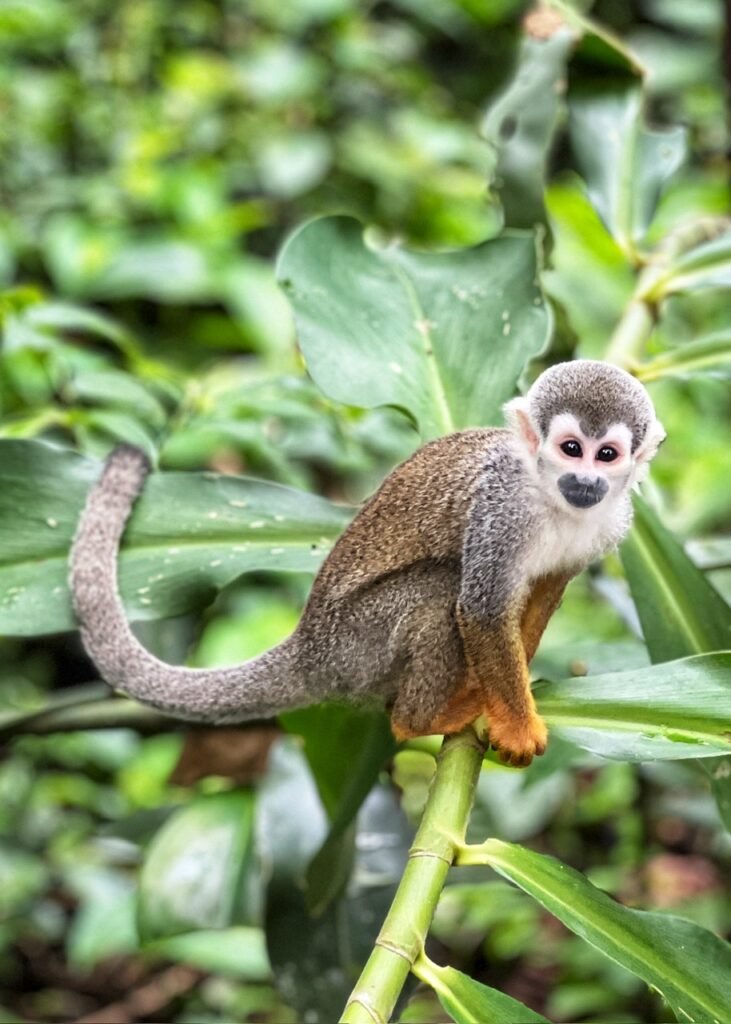
The work is now governed by Gilberto Guerra, founder of a non-profit organization and a large part of the animal care work is carried out by volunteers. (Delamazonas.) This definitely wasn’t a zoo or pet monkeys…they ran wild, but have simply taken over the island and love to wreak havoc with the tourists.
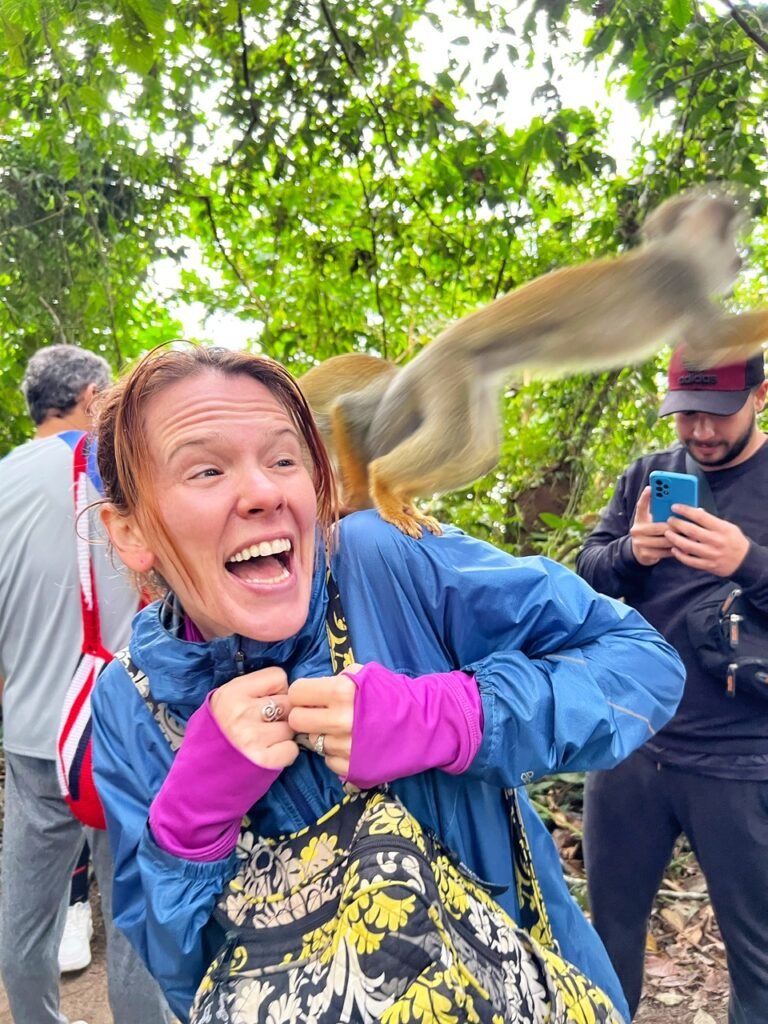
With a whistle, hundreds of monkeys come and swarm your tour group. Although we both love monkeys, the contrast between Mandy’s reaction…
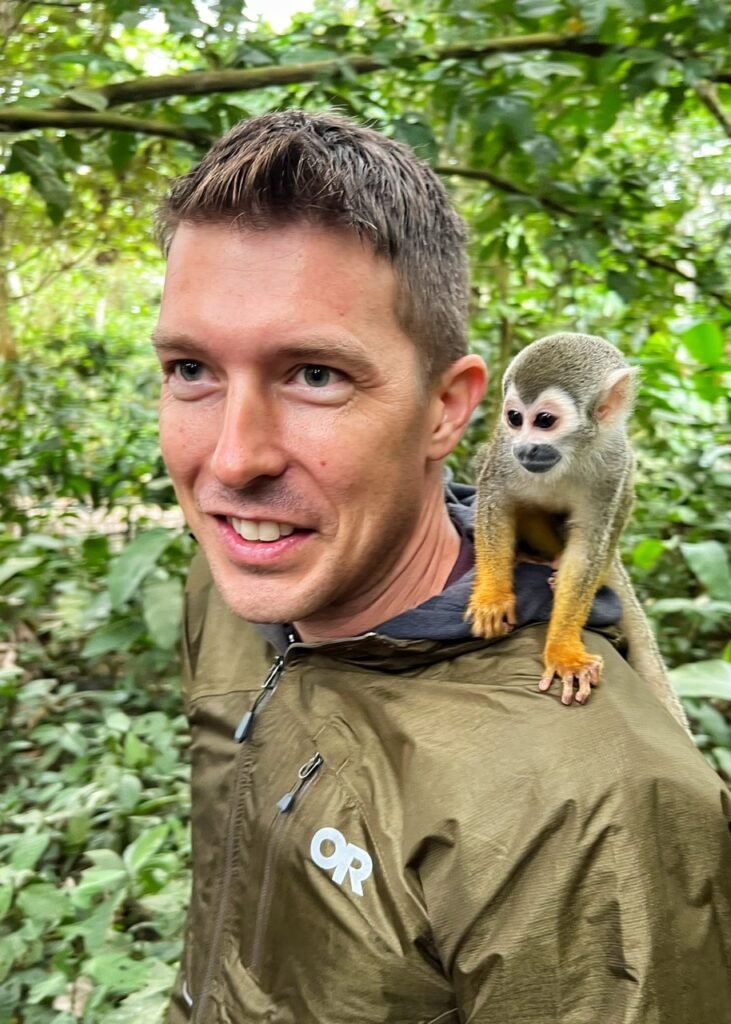
…and Greg’s reaction to being a jungle gym was bit different.
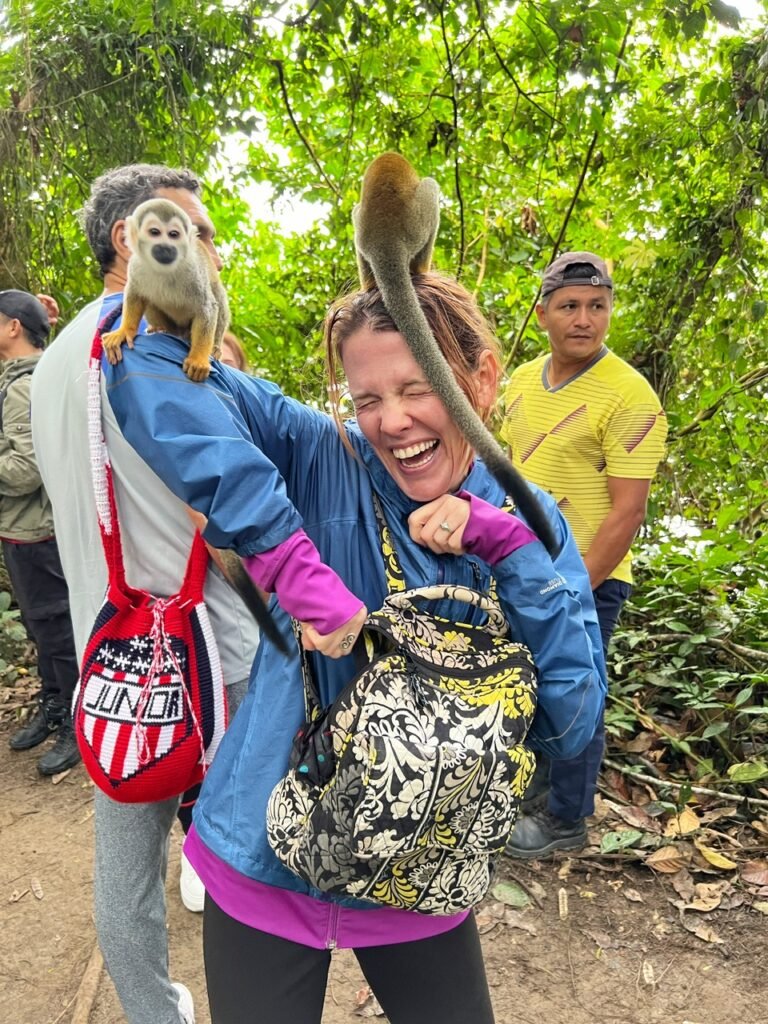
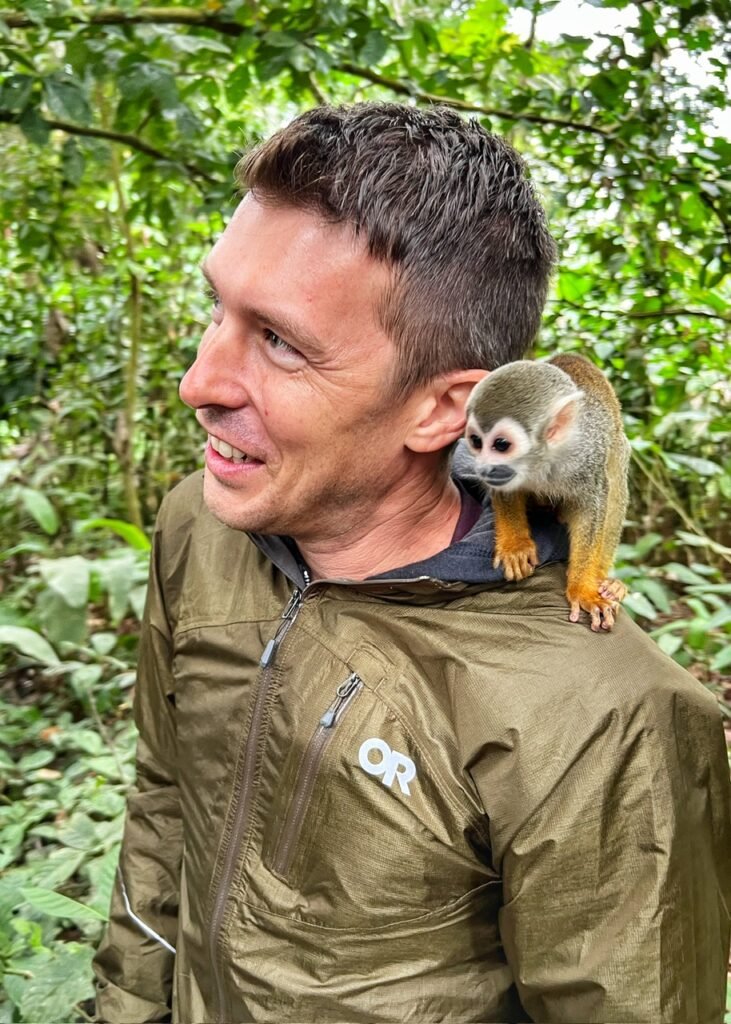
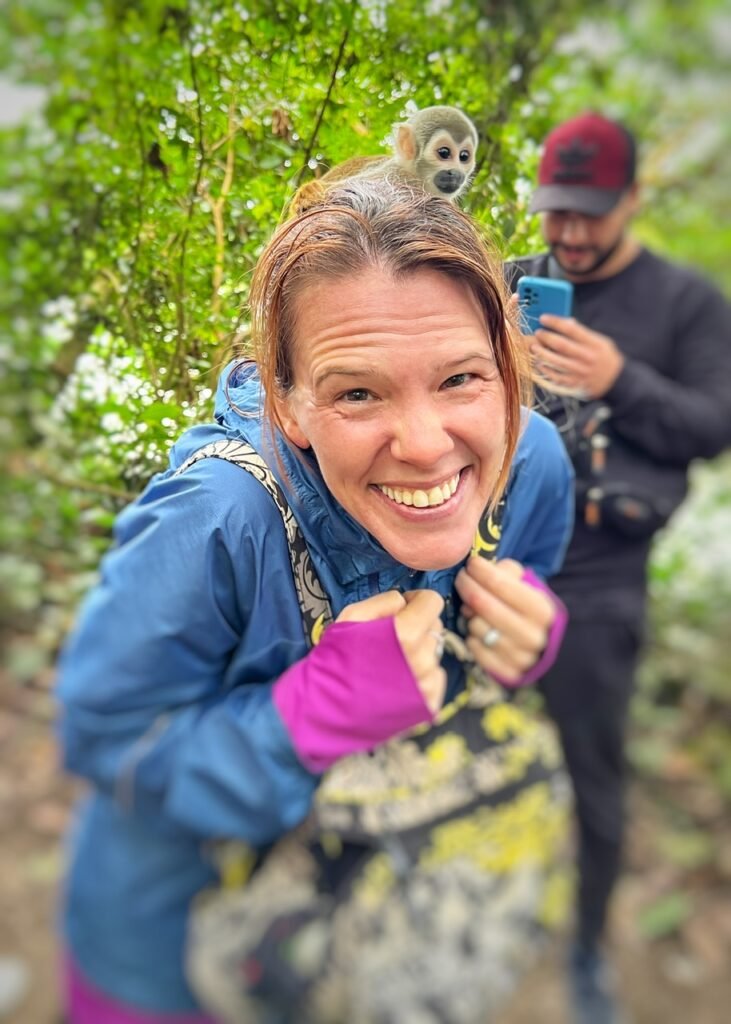
But I’m pretty sure….you might guess…who was having more fun. 🙊🤣
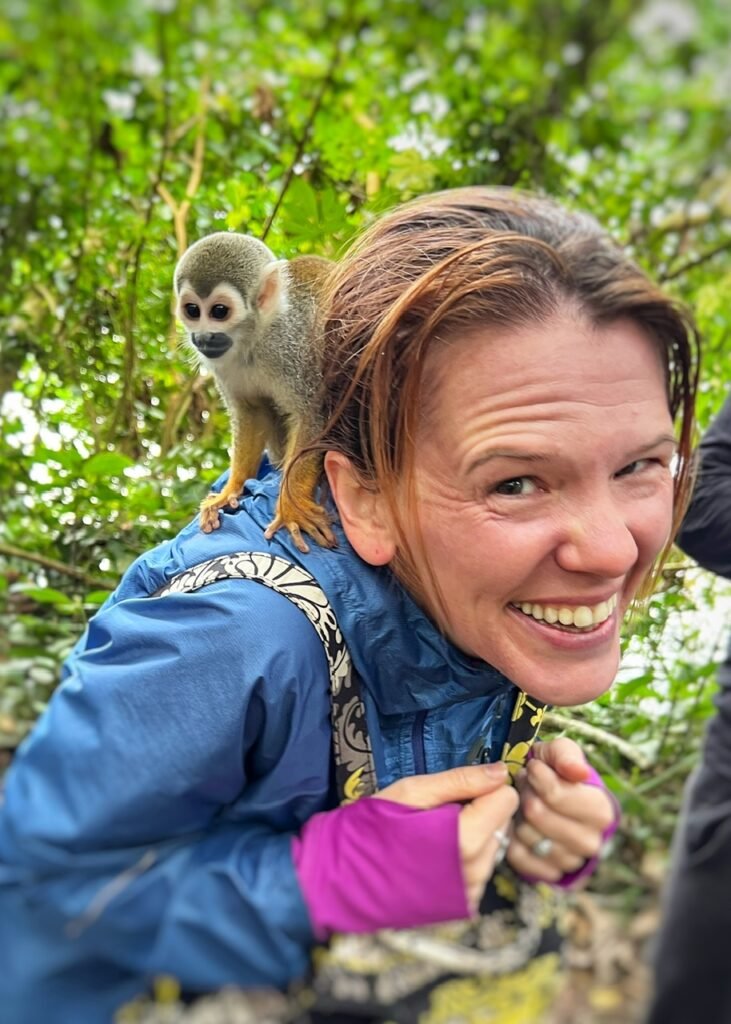
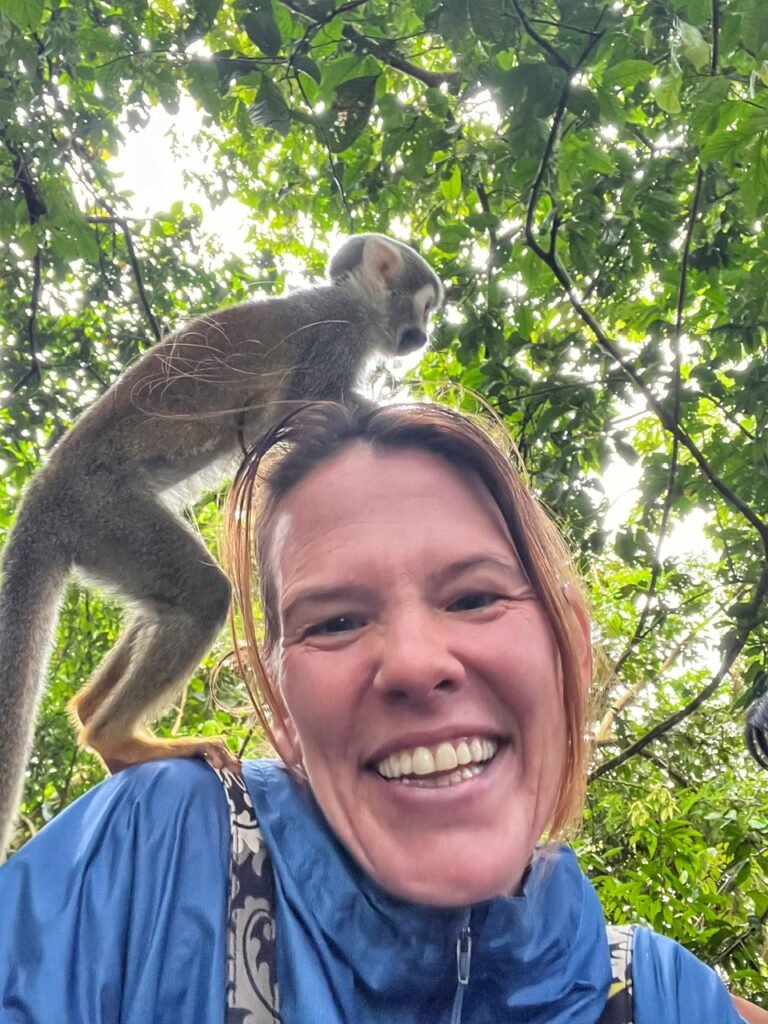
There is truly nothing to describe how cheery and comical this experience was, but the main rule here was that the monkeys call the shots. This means, they approach YOU, they climb on YOU, they feel YOU up…but never the other way around. Also, as with any monkey interaction, you have to remove any jewelry, food, and hats and secure all belongings because they are known to commit a bit of thievery.
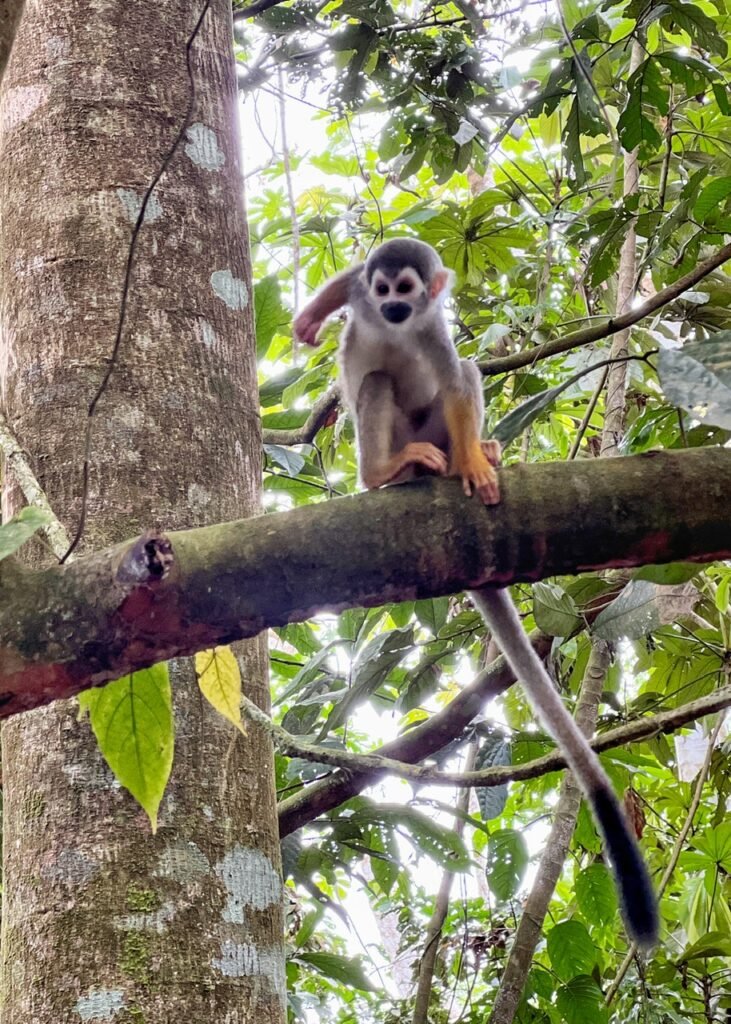
This guy?! Never.
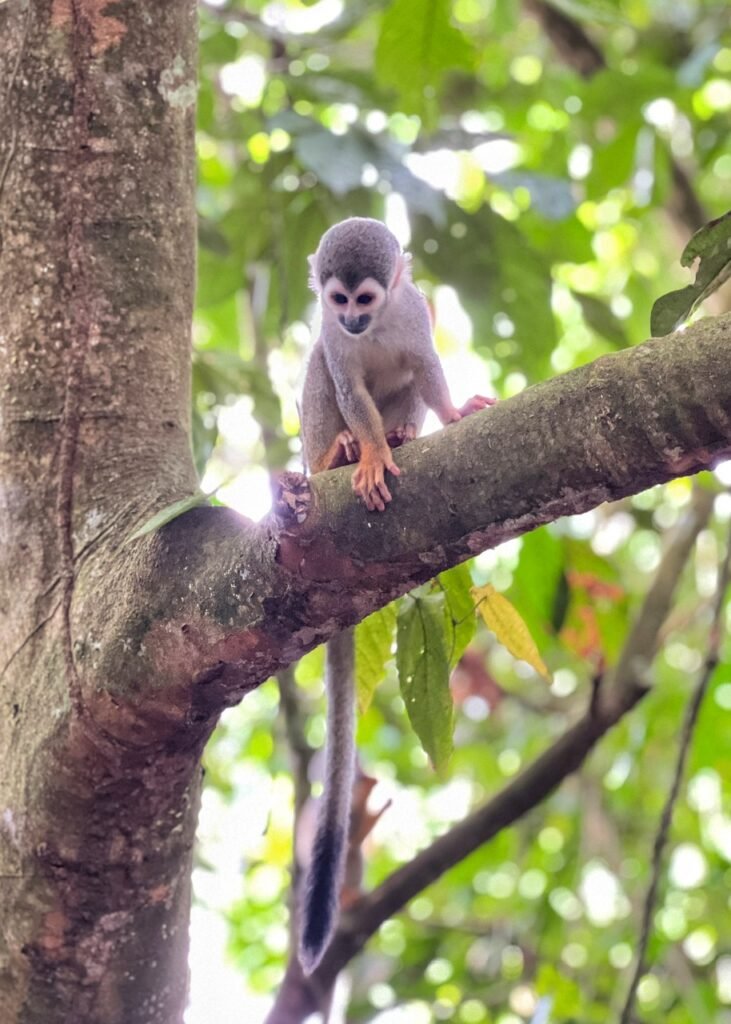
Looking for the perfect playmate!
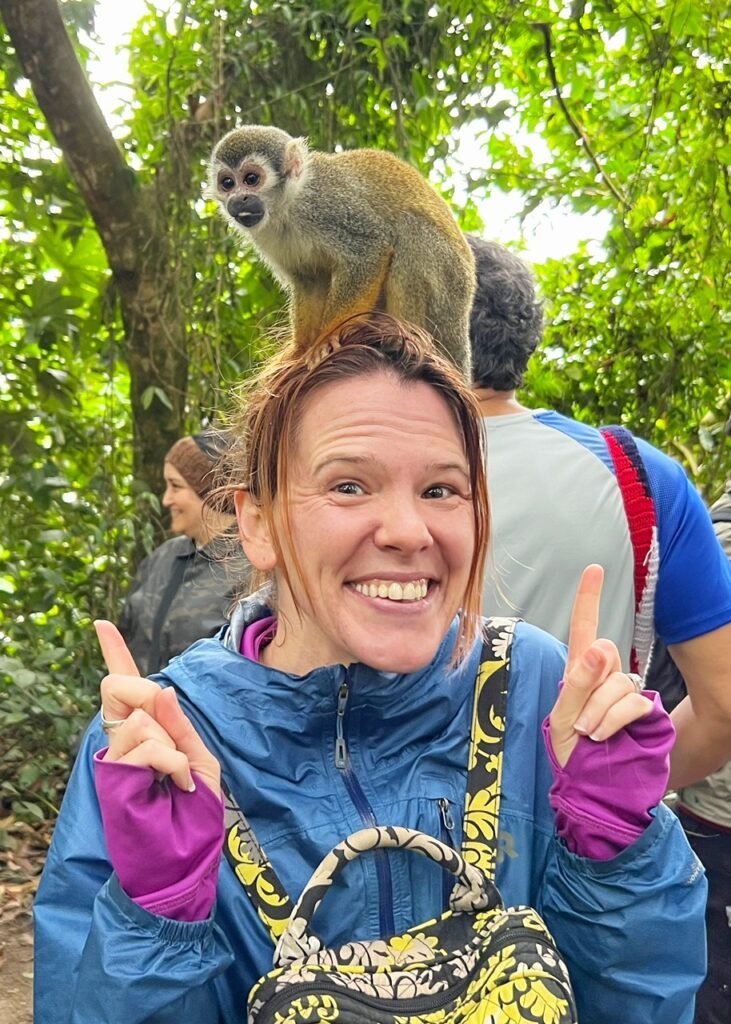
Finally, Mandy stopped squealing and was able to get the ultimate shot.
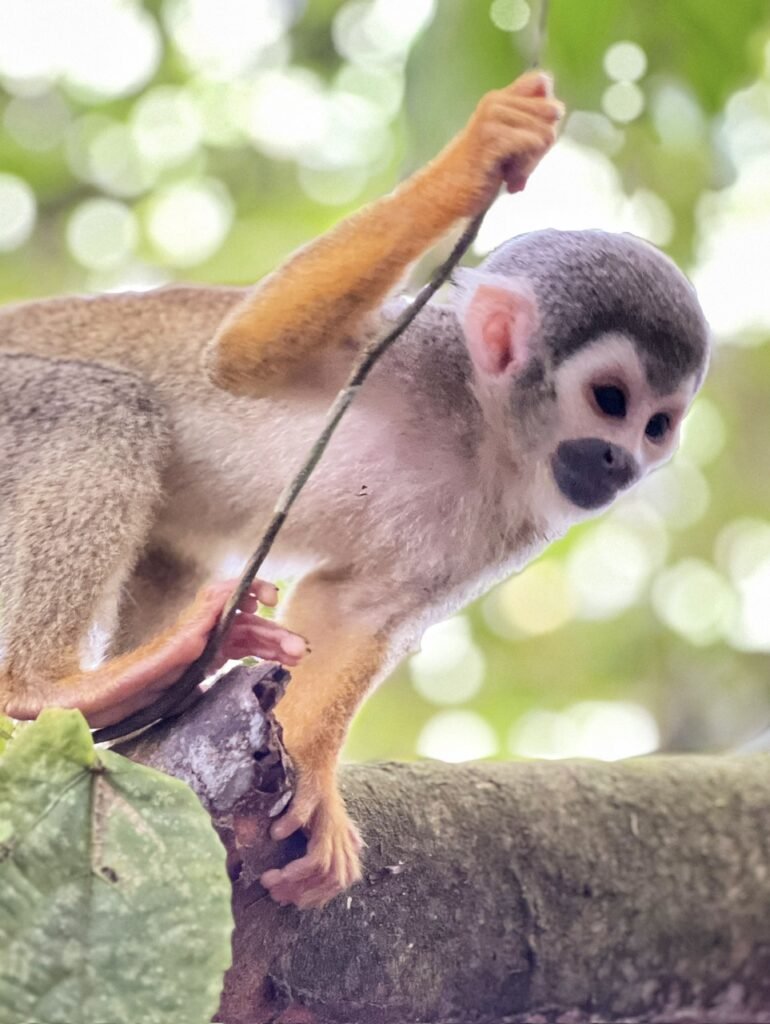
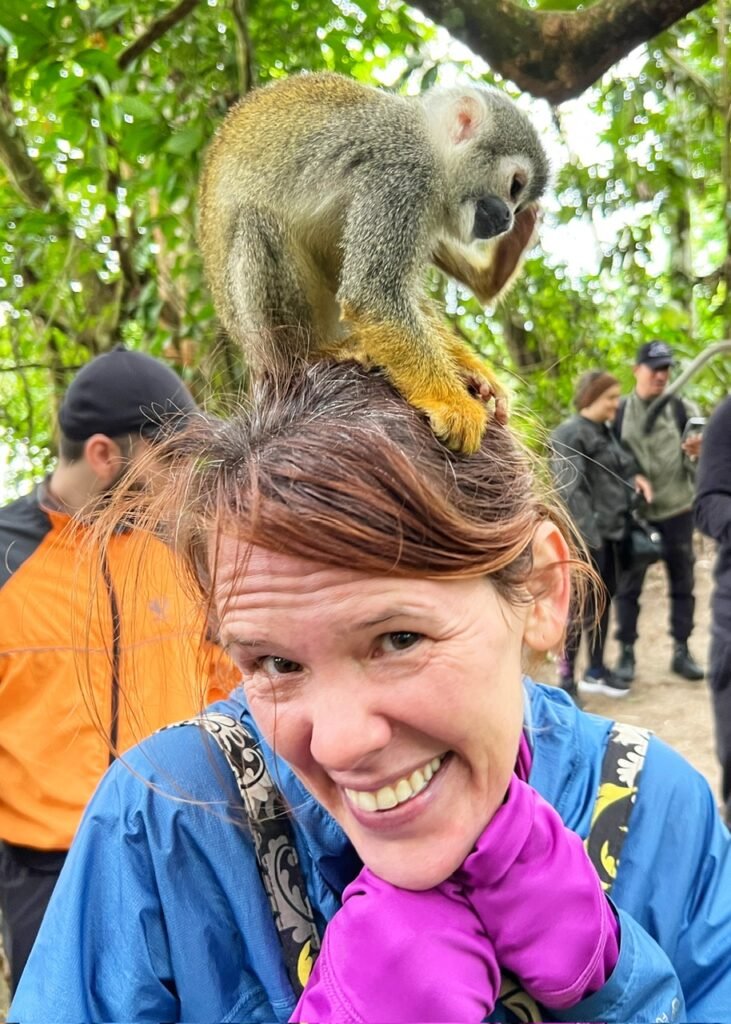
Who to practice my cannonball on next? Score!!!! Hmmm, this lady seems fun, but she really needs to work on those roots!! 🙈
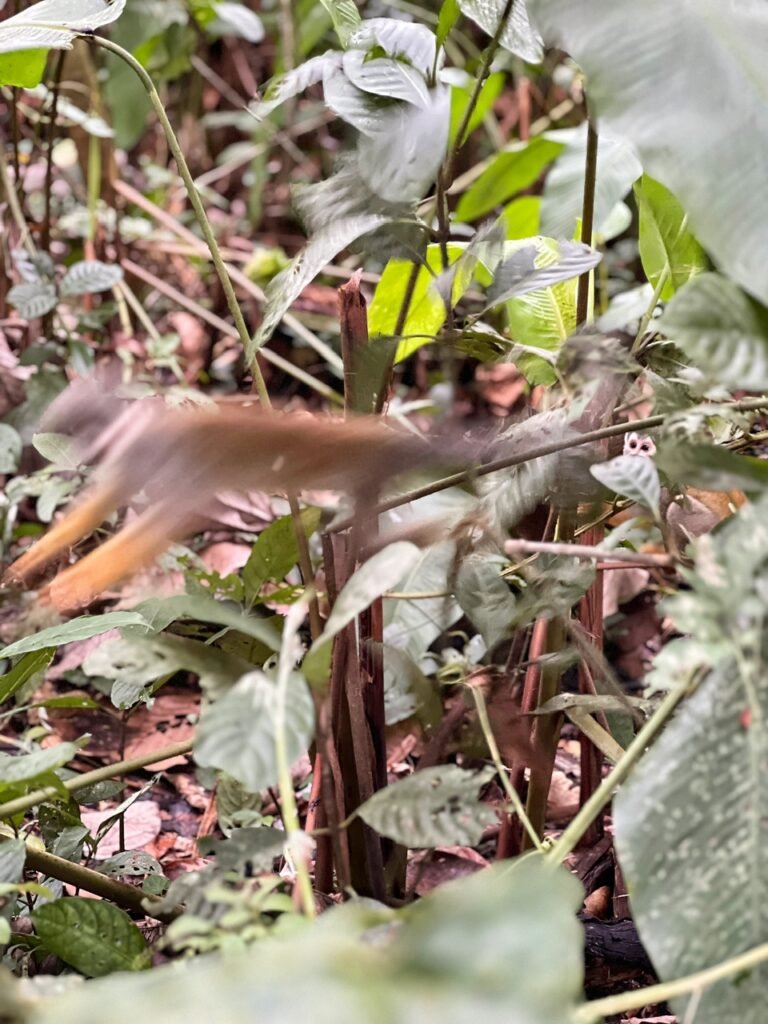
In addition to flying through the trees and on humans, Squirrel monkeys are very active and regularly whip through the brush on the ground…like…squirrels. Can you find the monkey face in this photo?!
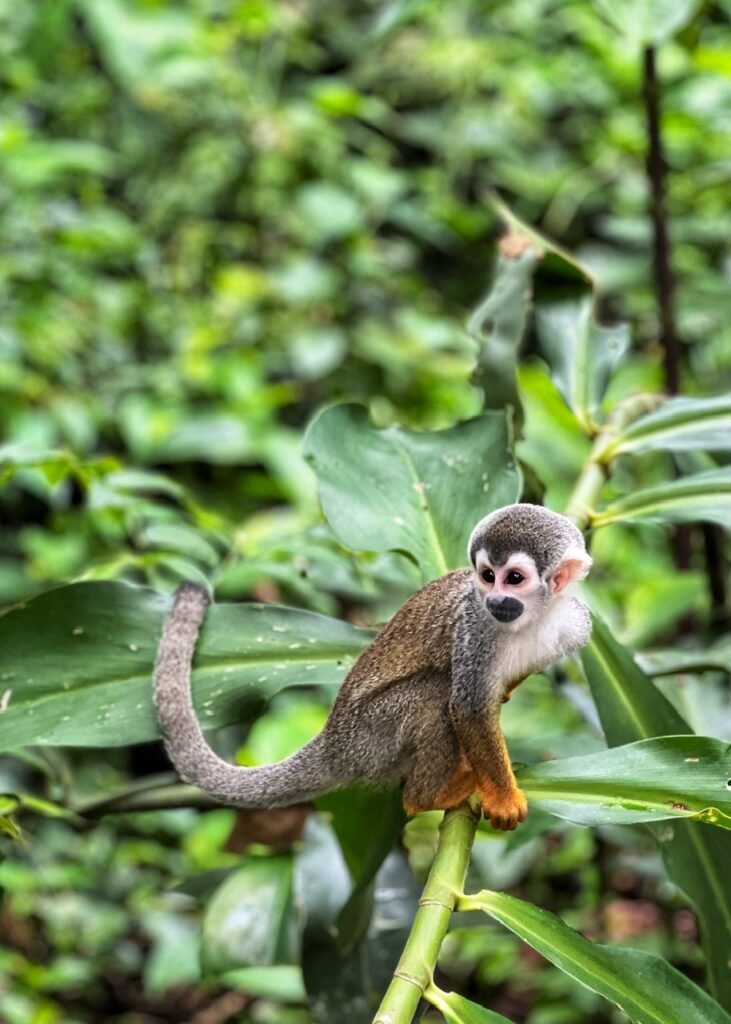
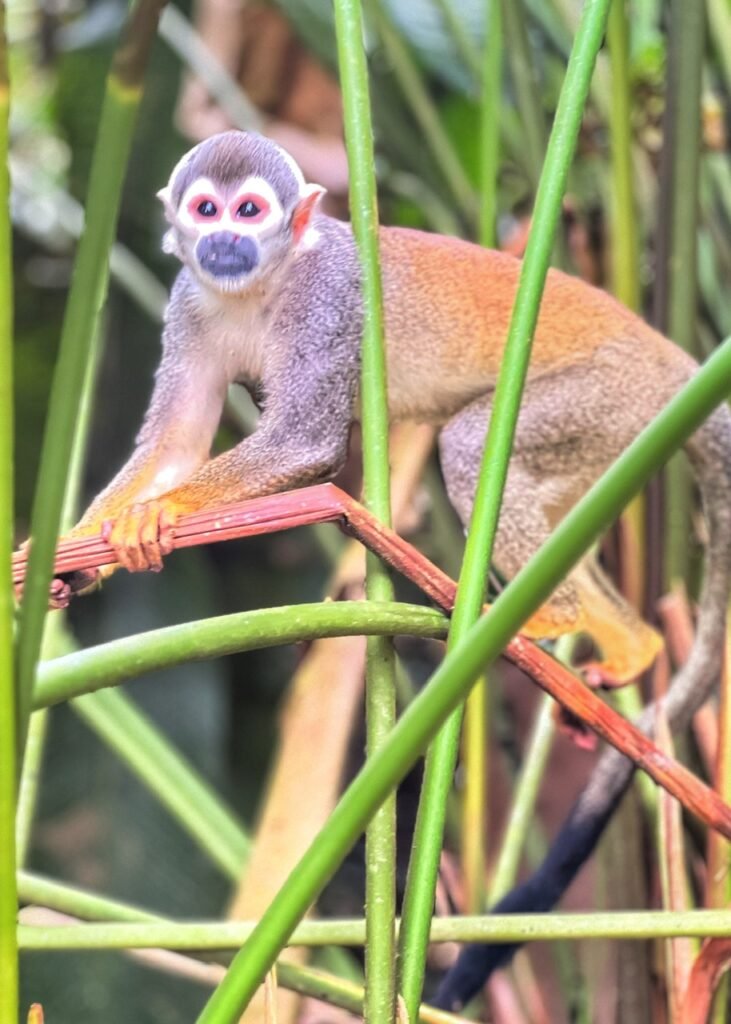
This species is mainly frugivorous-insectivorous, making them important in the dispersion of seeds. Among other species, on the Isla de los Micos inhabit howler monkeys, woolly monkeys, huapos, and sloths.
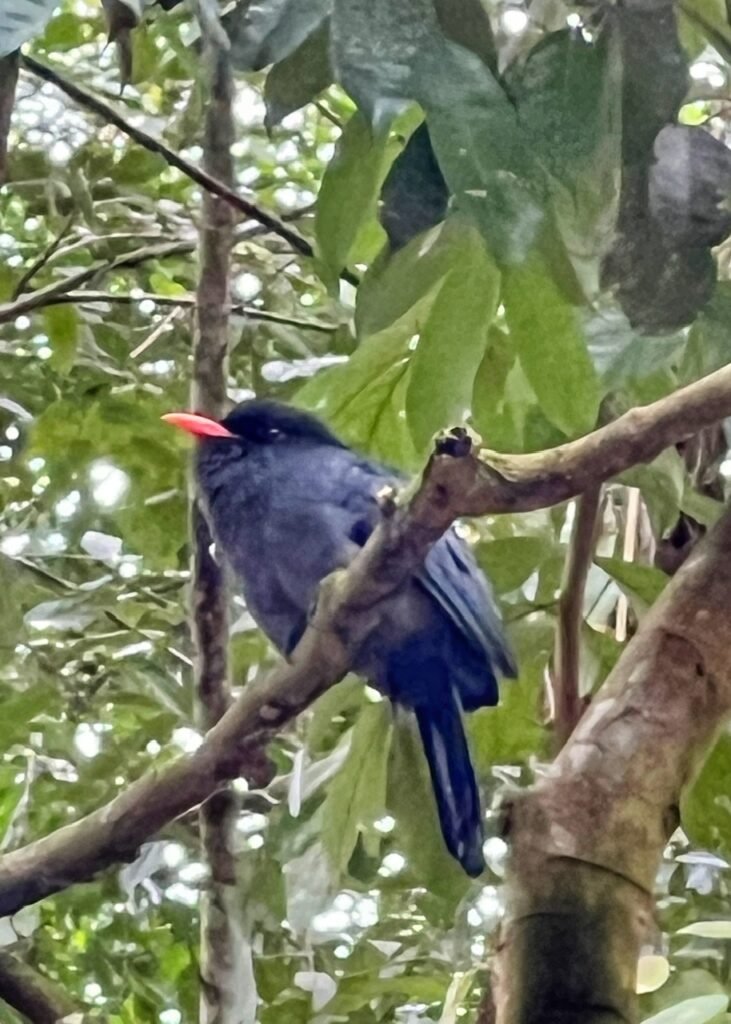
A chubby little black bird called a Black Fronted Nunbird is spotted only in this region.
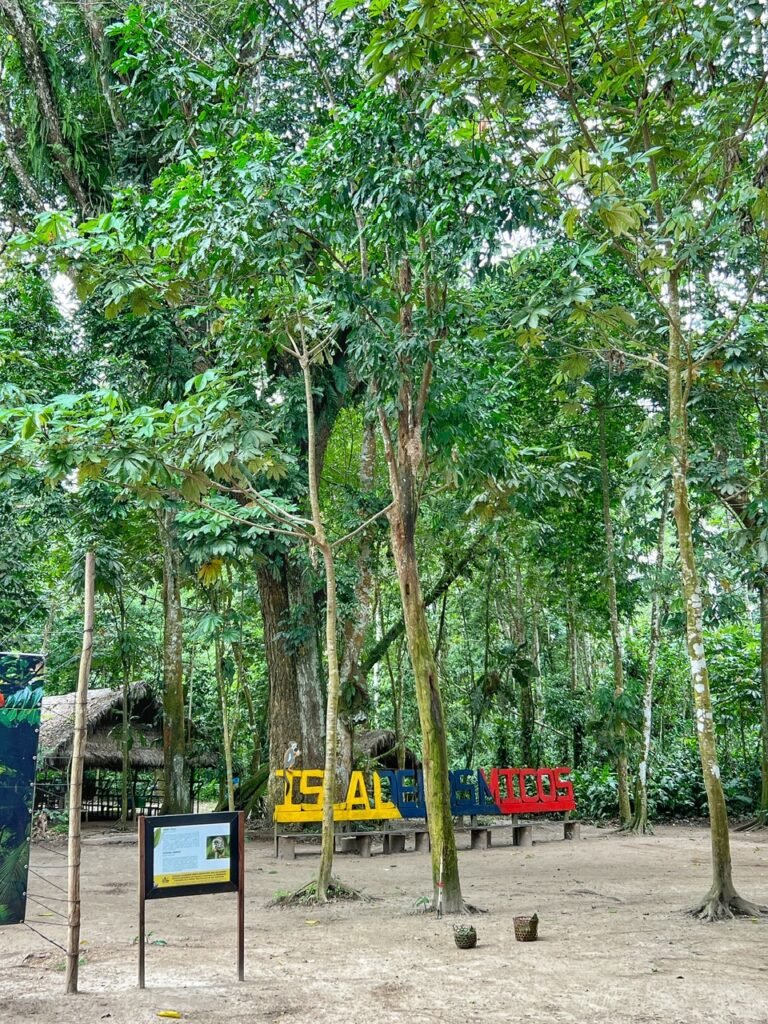
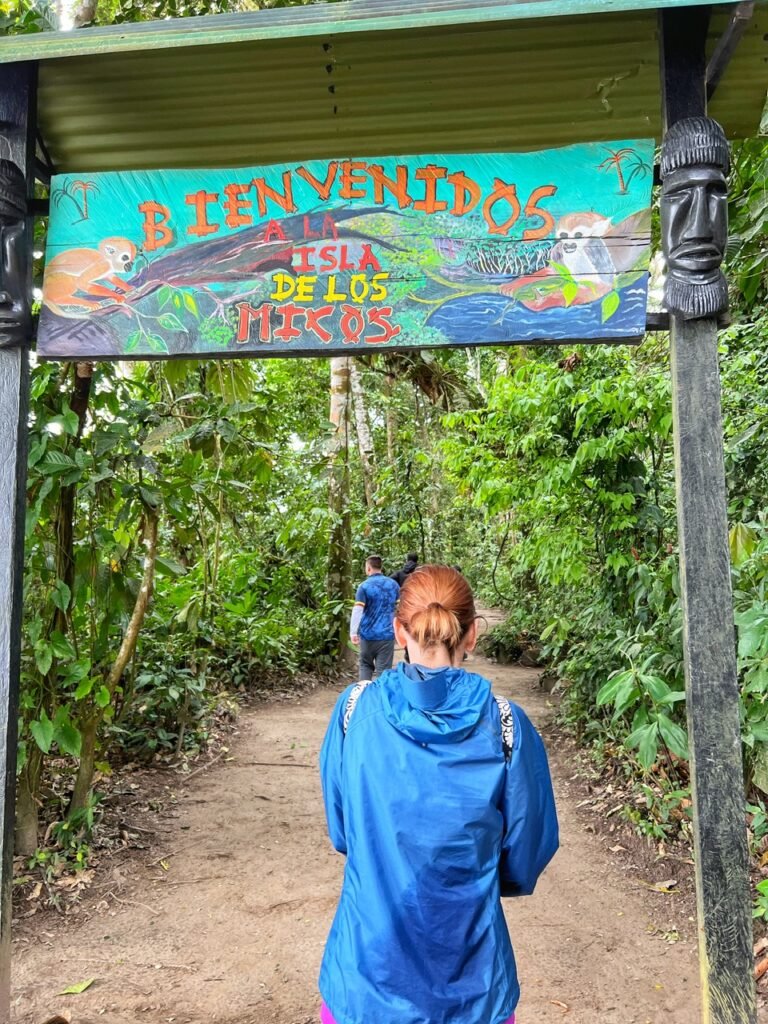
Heading out from the Isla de Los Micos. Mandy made sure to give her hairs a good shakedown on the way out to return any monkey gifts back to the earth. For the live monkey experience, check out the video at the end of this post.
The Community of Macedonia
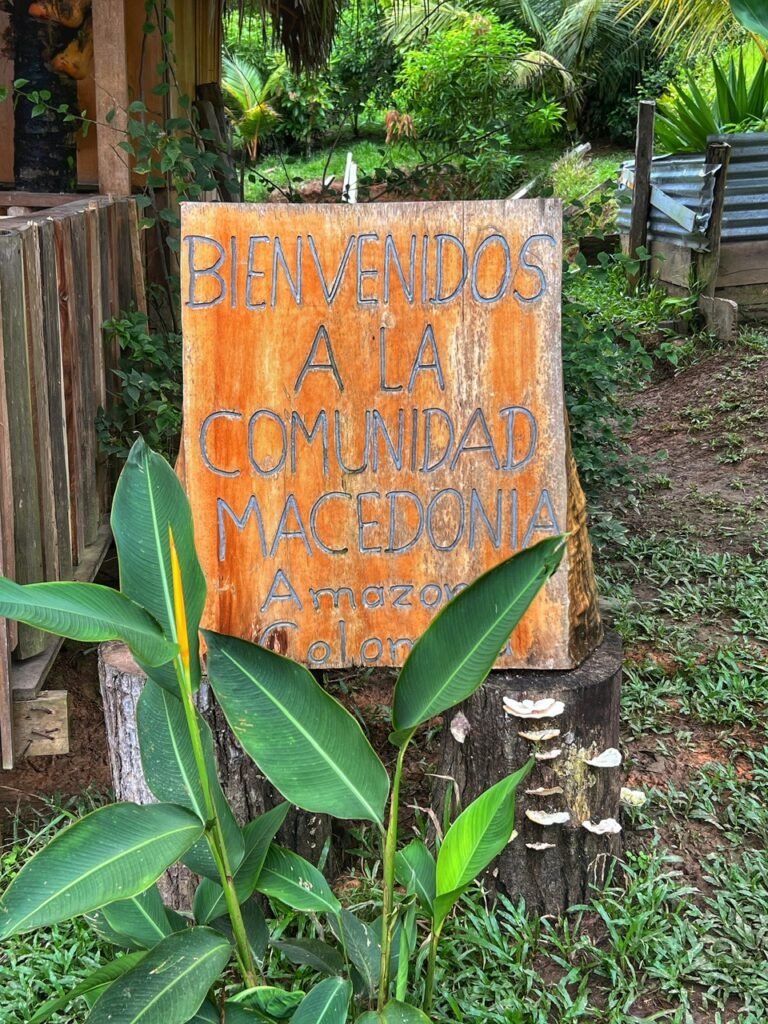
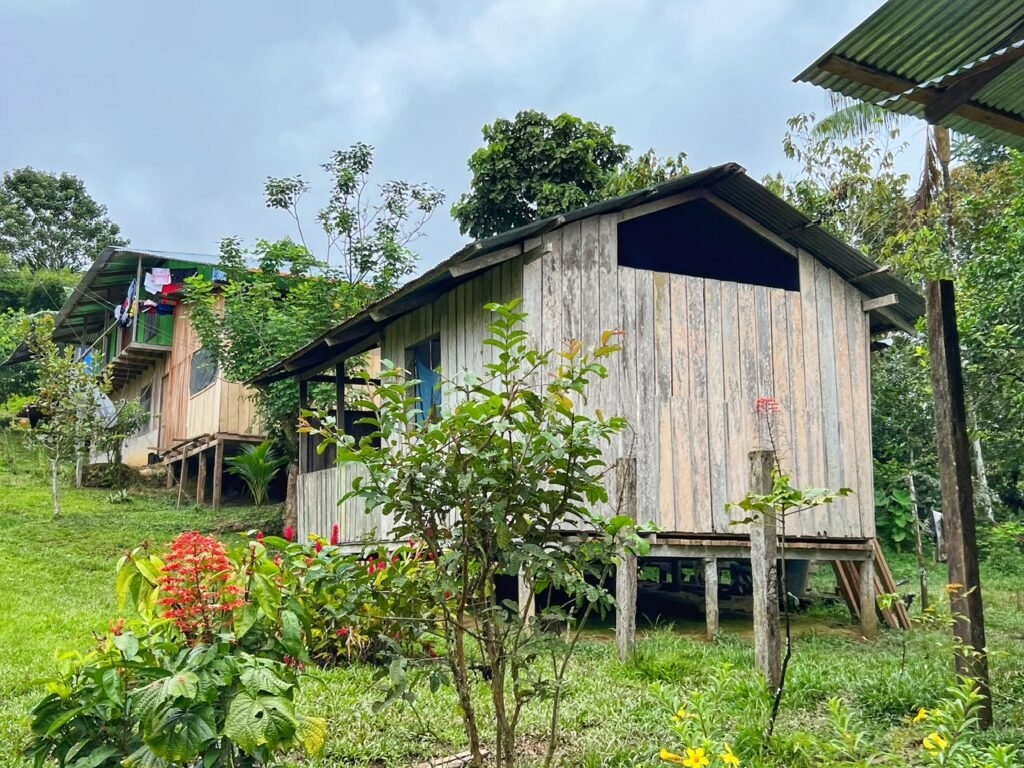
Arriving to the indigenous village of Macedonia, where the Ticuna people live. We learned how to greet them by saying, “Nomai” and “Mooenchi,” which means thank you.

It was fun to get up close and personal with the very distinct Amazonian home architecture.

We then were invited into a giant straw community house called a maloca to learn more about the customs and pelazón ritual, which is a celebration when a girl becomes a woman. The older women remind her of her future responsibilities, and they gradually tear her hair out until she is completely bald and “has become a new being.” The girl is painted with huito (ink) and has heron feathers stuck to her, and her body is covered with different ornaments, which is followed by dancing and celebration.
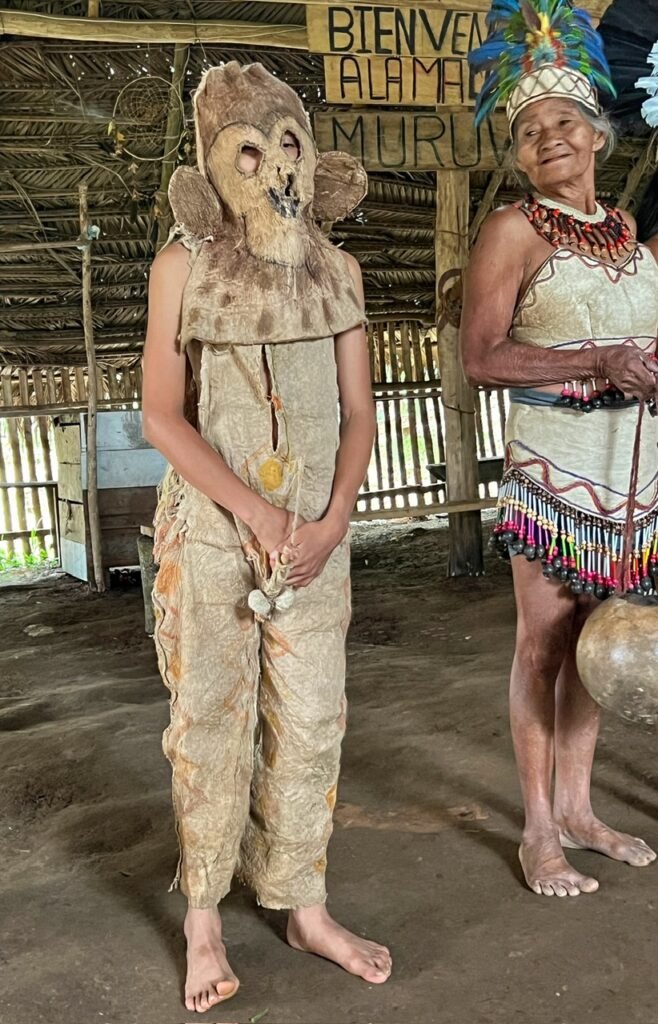
Oh, and there’s always a dancing monkey with a very erect member who naturally represents her fertility. 🙈🤨 Can you imagine learning about sex in this way? 🤣
After the ceremonial dance, in which we also got led into the circle and danced (I use this term loosely) to the tune of a turtle shell drum, we had the opportunity to buy handicrafts. As usual, we couldn’t stock up on Amazonian blowguns, but Mandy did get a bracelet and was happy knowing all the income went to the community.

Hanging out with our new friends. The temperatures were quite chilly that day so the poor girls were freezing their tail feathers off.
Puerto Nariño
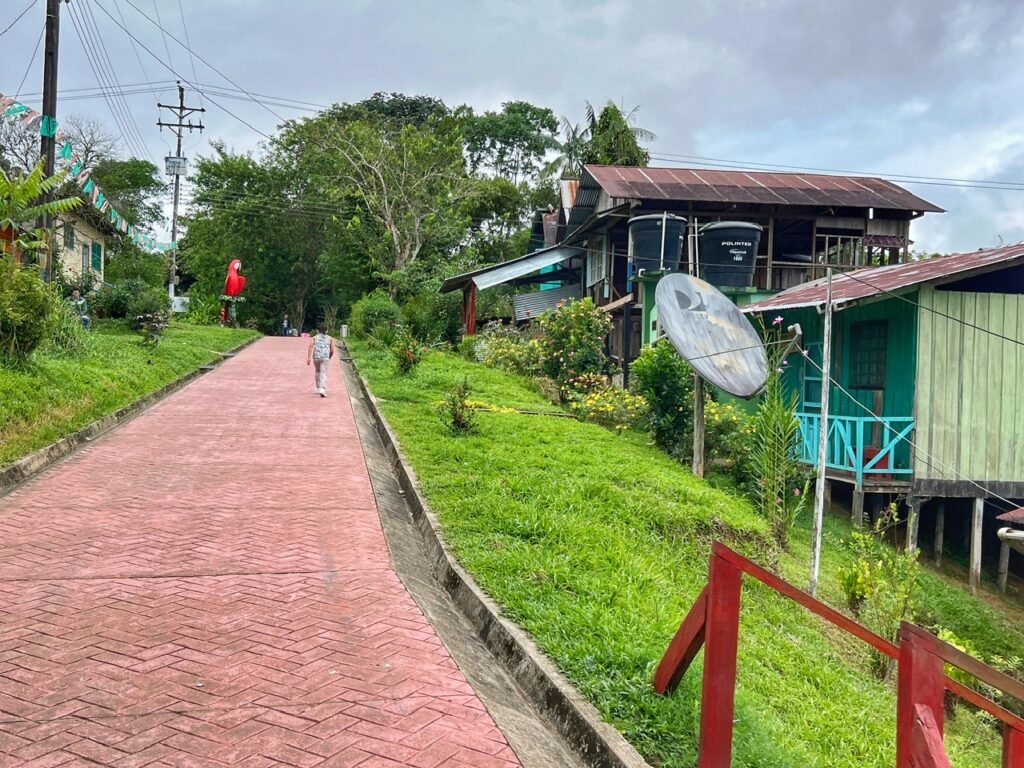
After the surprising child with a strap-on, we headed to the idyllic pedestrian-only village of Puerto Nariño, which is the only community of substantial size on the Colombian Amazonian side. We originally had plans to stay here a couple nights but canceled them because it’s logistically challenging, taking about 3-4 hours to get there from Leticia. However, should we ever go back, we’d definitely consider it.
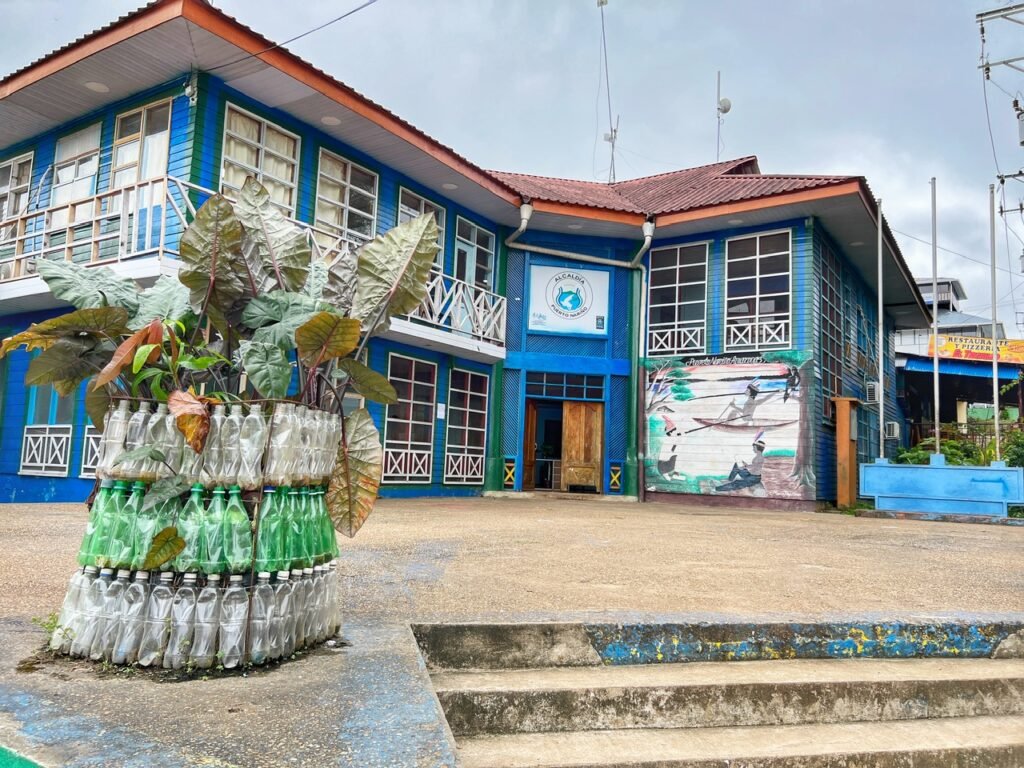
In Puerto Nariño, we continued to notice how interesting their repurposing was and learned that here rainwater is pooled in cisterns and electricity comes from the town’s fuel-efficient generator. The citizens are regulars at tidying the landscape every morning and there is an ambitious recycling program.
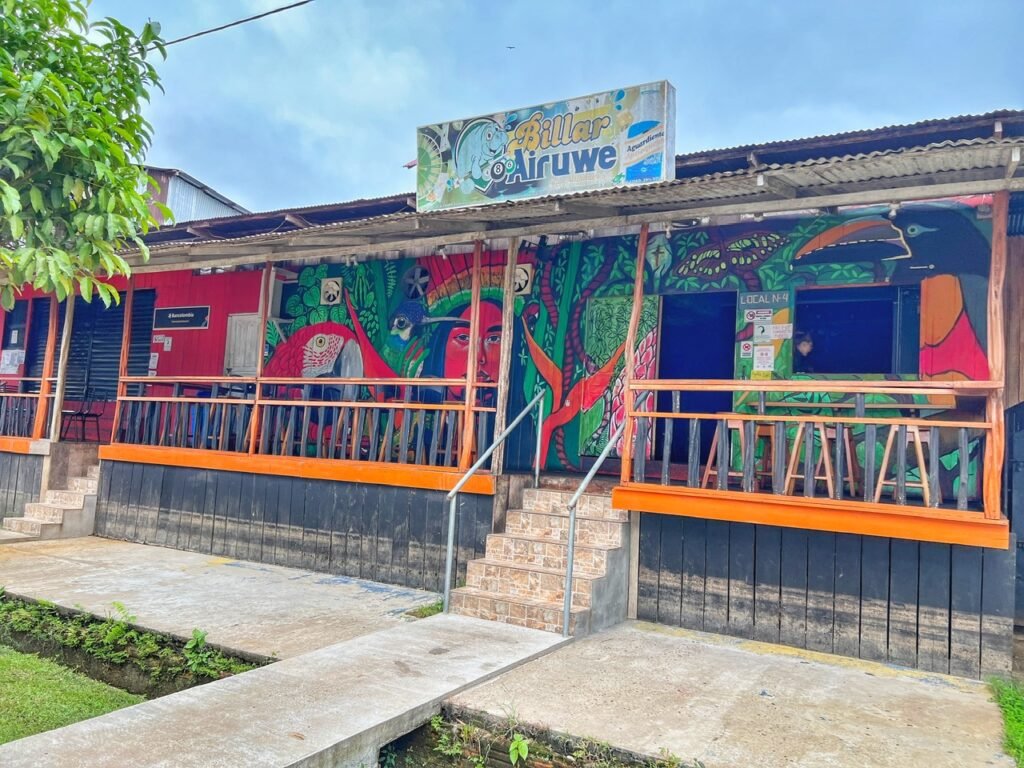

A bar in Puerto Nariño and their nicely covered fútbol pitch.
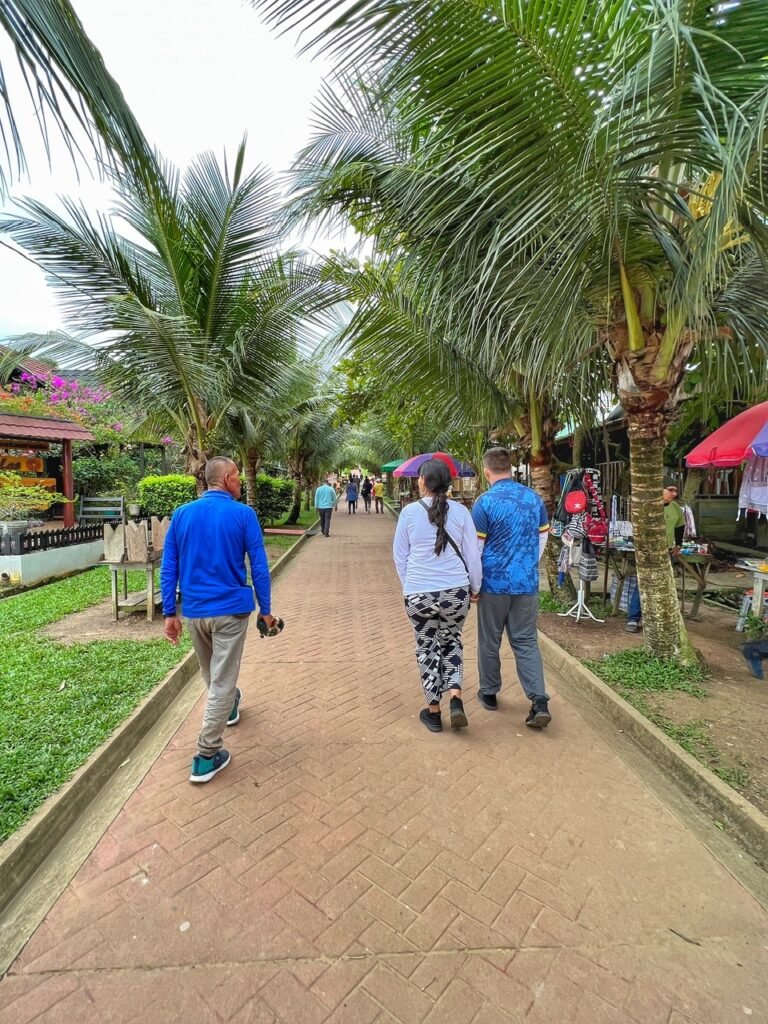
Beginning our walk around the community.
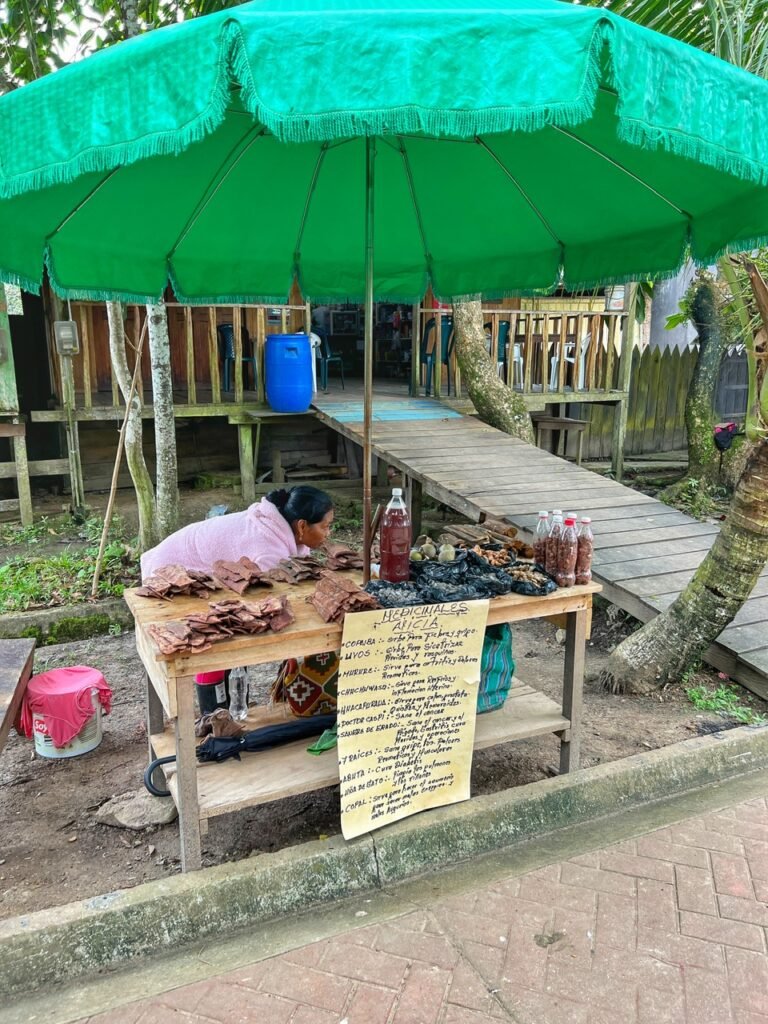
Amazon pharmacy.
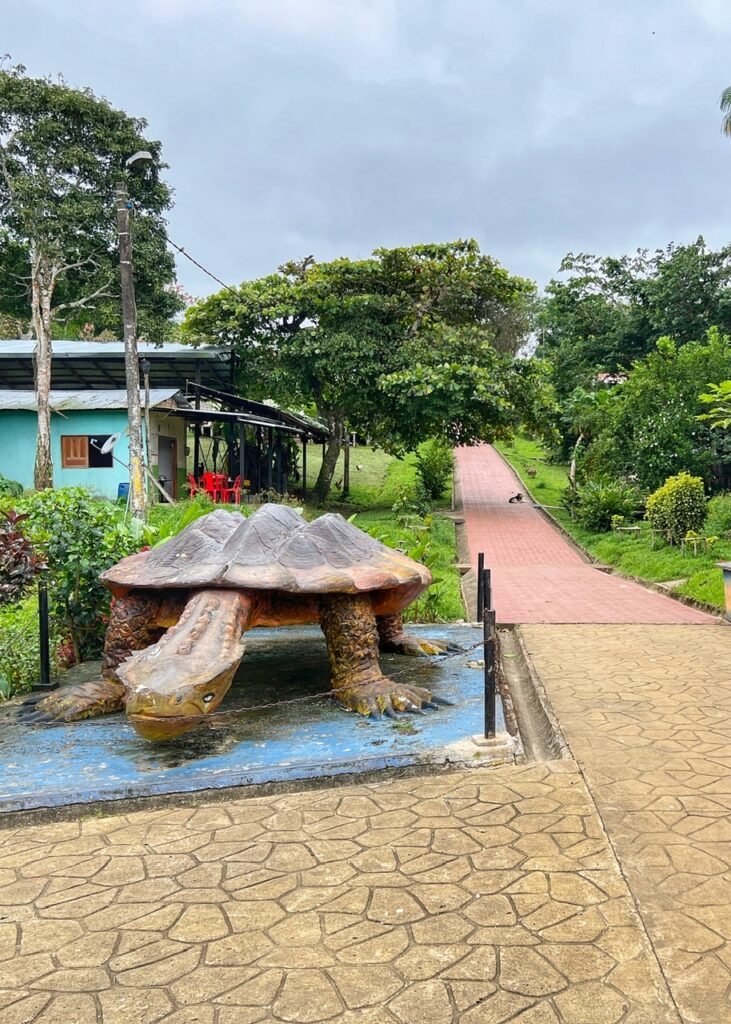
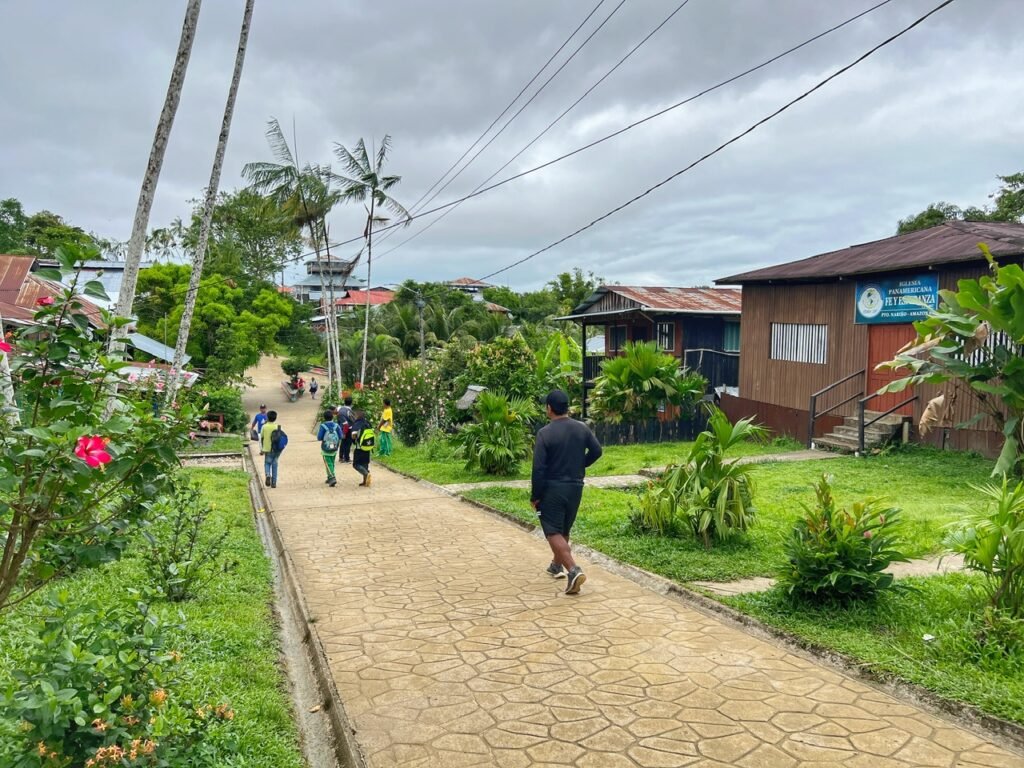
We absolutely loved the walking-only culture in Puerto Nariño where no motorized vehicles were allowed. The only roads were blissfully strollable palm-lined sidewalks. It had similarities to some of our favorite places including Isla Taquile on Lake Titicaca and Isla de Bastimientos on Bocos del Toro, Panama.
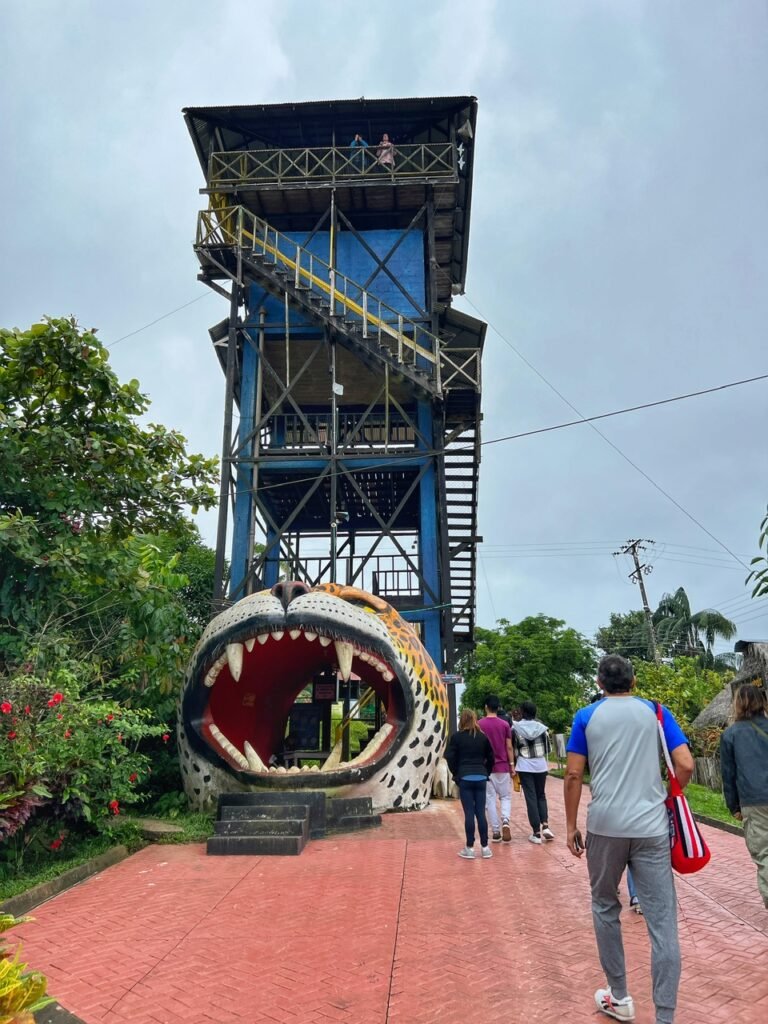
Our guide had told us to turn right and go into the mouth of the tiger. Until we arrived, we had no idea he meant the mirador. 🤣
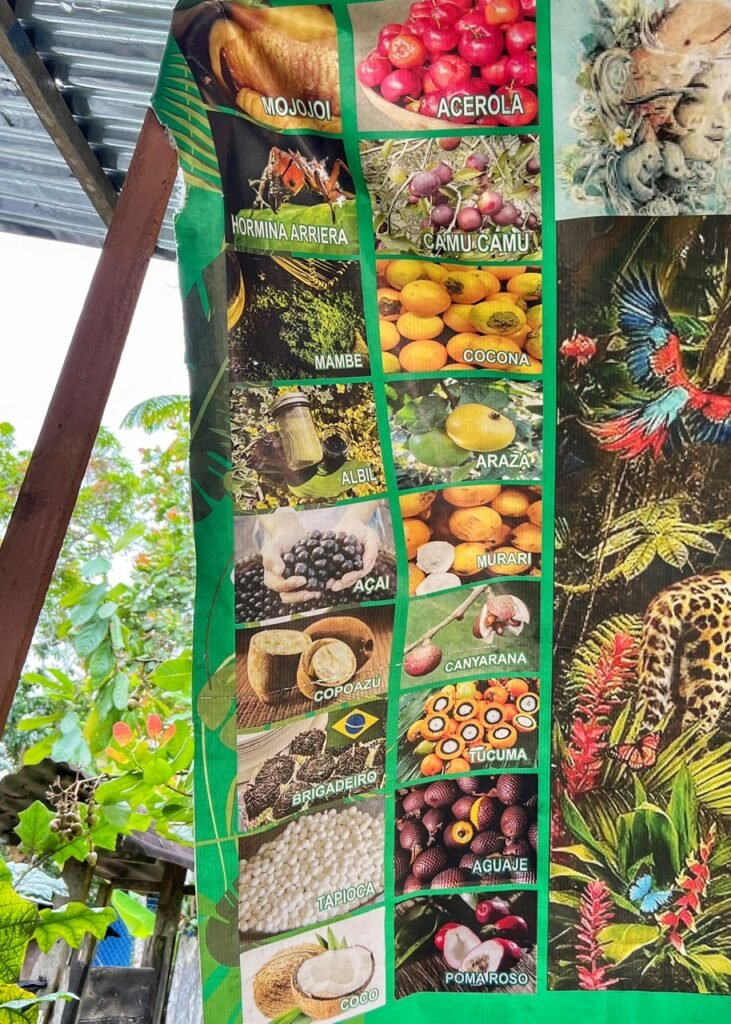
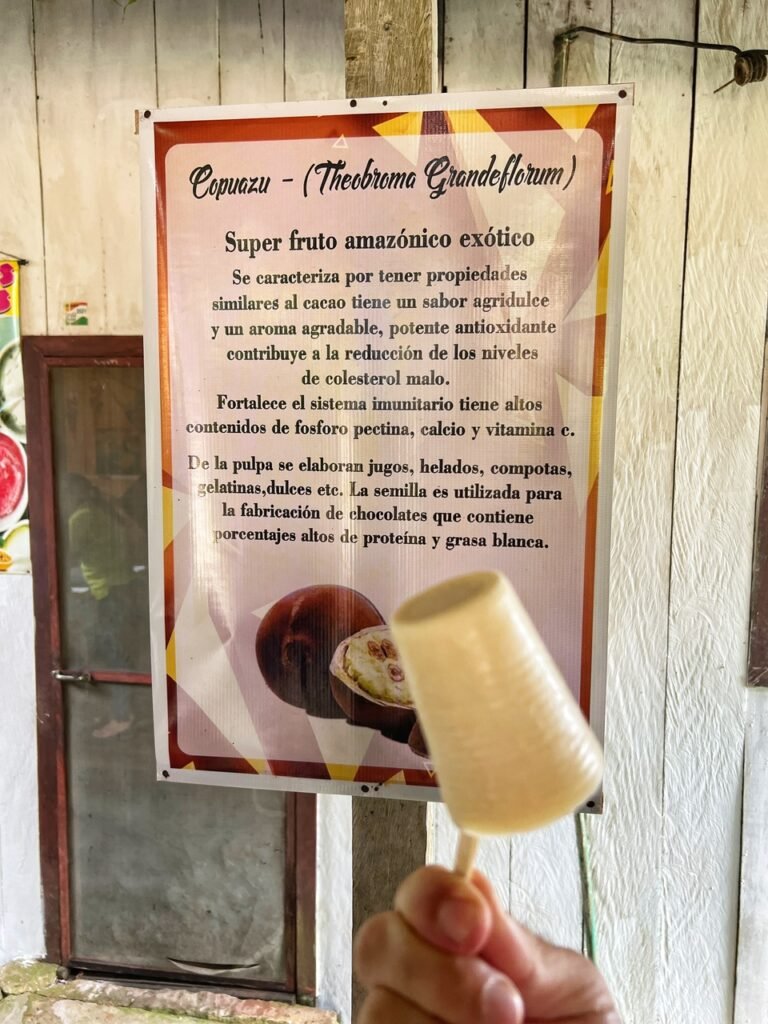
The many intriguing options of Amazonian fruit ice creams. And yes one of them is ants. As a starter option, we instead chose Copasu, which has antioxidant properties similar to cacao, which was a pretty good pick.
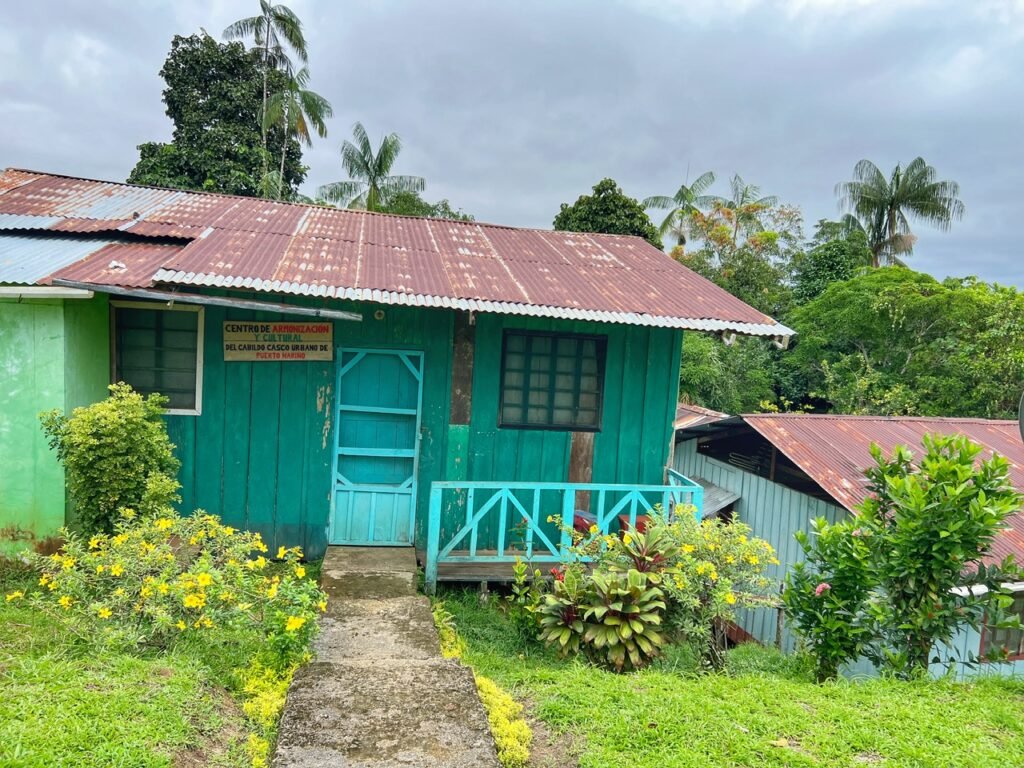
The angles on this house look like they fell out of a fantasy land.
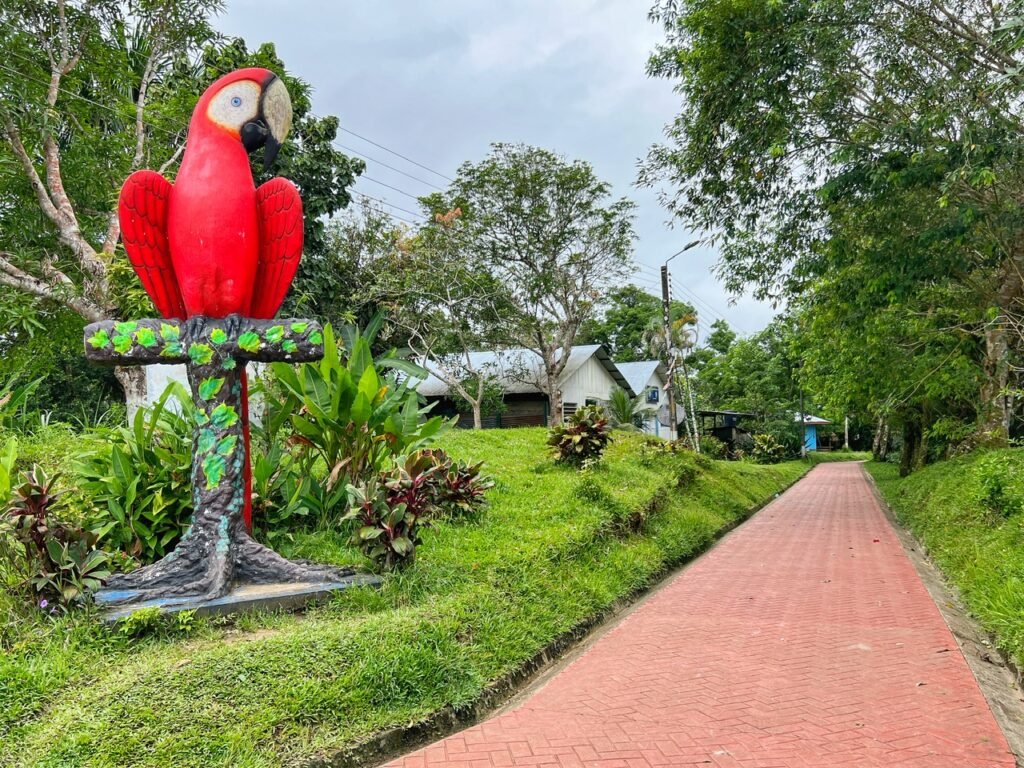
They like their big animal structures in Puerto Nariño.
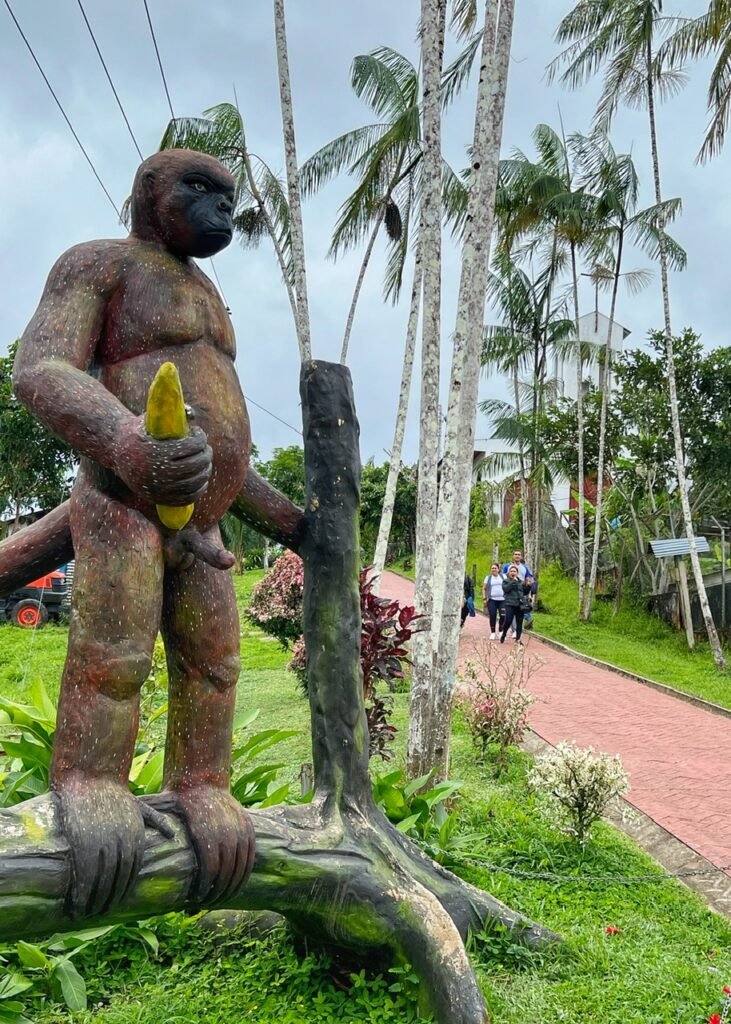
Including more monkeys with big bananas.
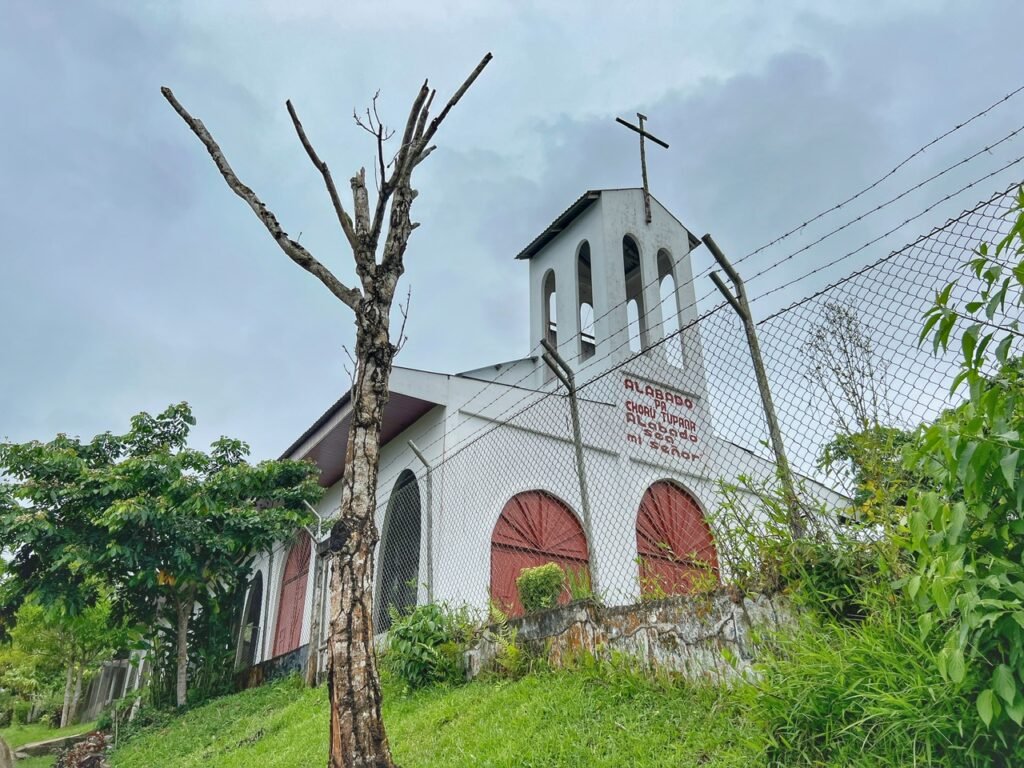
The church in Puerto Nariño had a completely open concept with open walls, which would be nice for the daydreamers during mass…
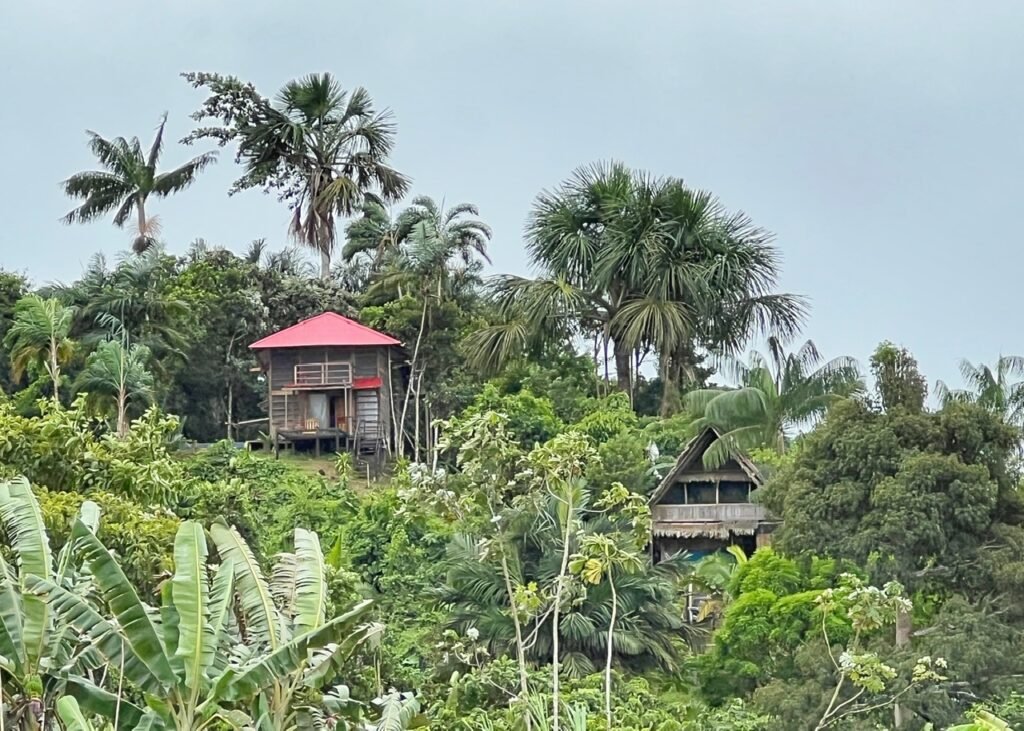
We stop for lunch at Reserva National Park, which seems like another fabulous place to stay for about $25/night. They had several treehouses and cabins and were perched high on a hill, surrounded by exotic birds, with a view….

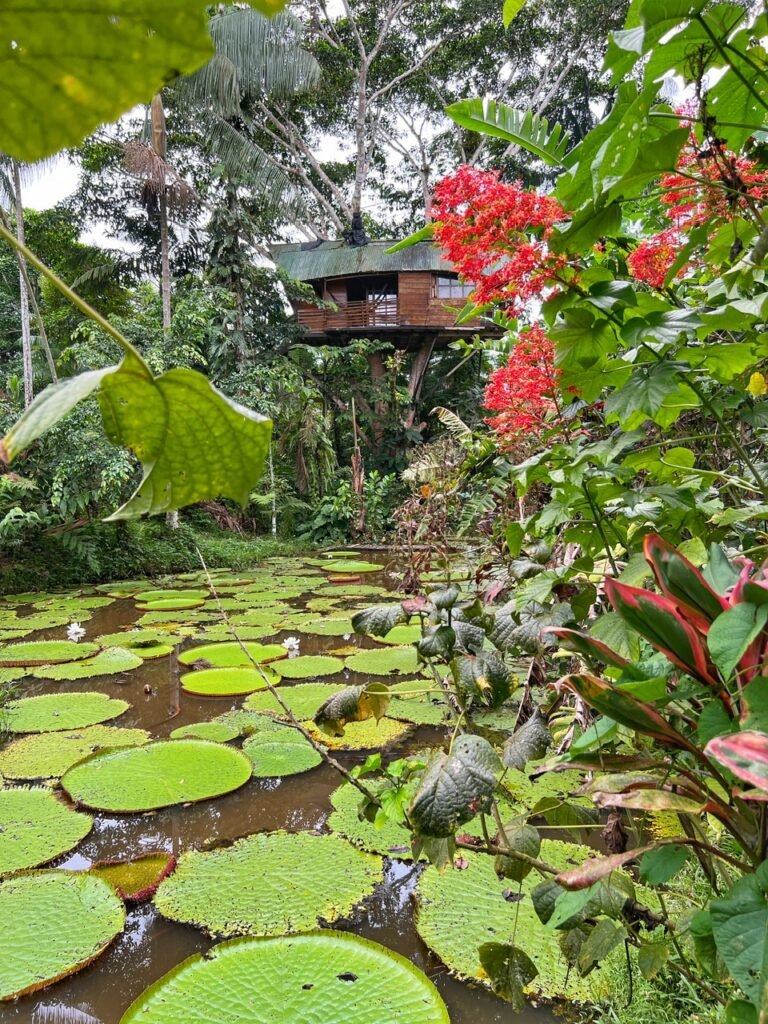
…and an exquisite lily pad pool. Wow, wish we were frogs.
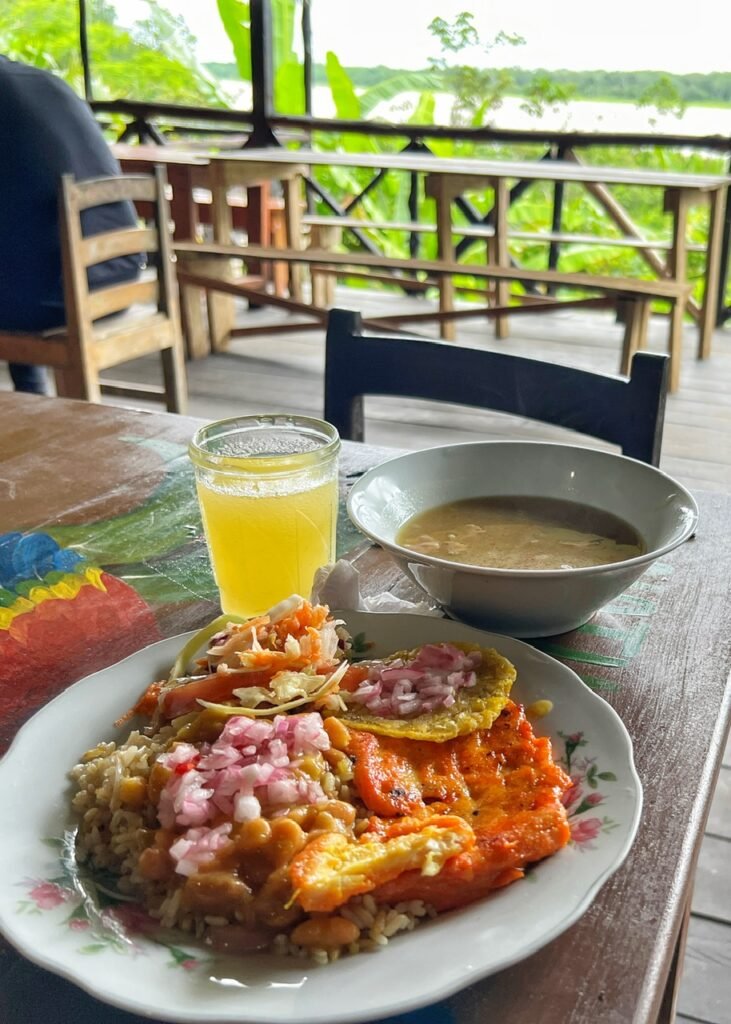
Also, the lunch was different and dynamic including some of the best fish we’d had yet. And the most wonderful onion picante sauce to dump all over everything.
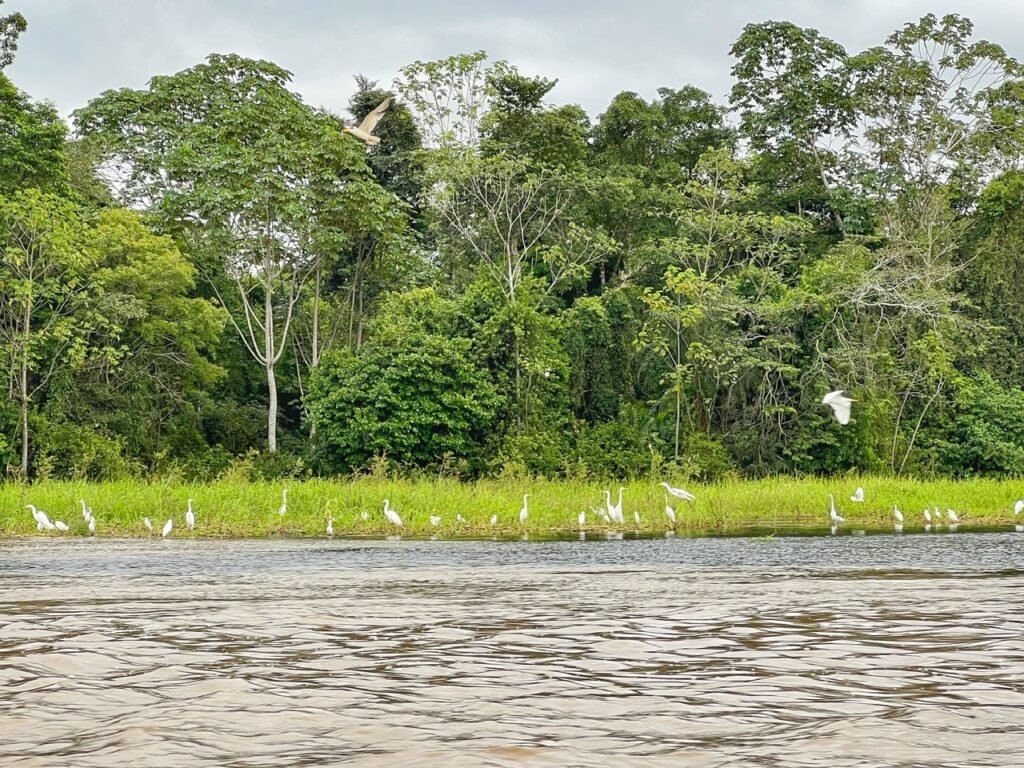
On our way back we did some river dolphin scouting. We saw several grey ones but nothing close enough to get a photo. But lots and lots of herring(s).
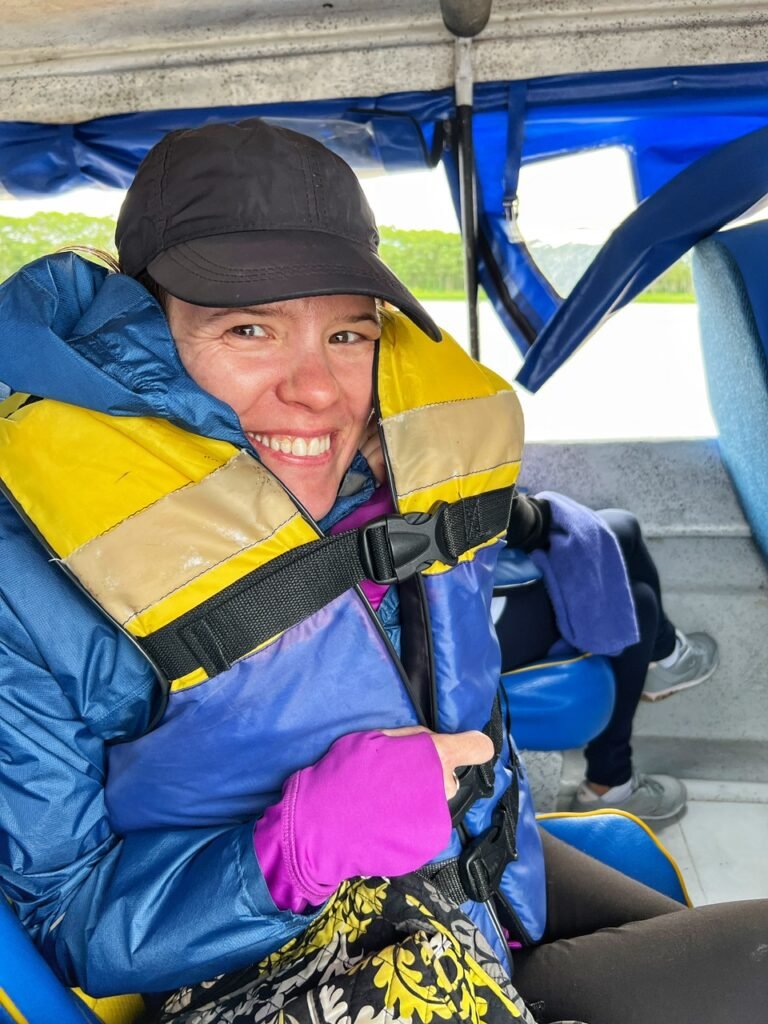
And yes, this is how freakishly cold it was on this day. Mandy had both arms stuck inside her life jacket. We couldn’t have picked a better month to come to the Amazon. Evidently, this happens nearly every year for a few days, before the sun comes back out and it gets steamy again.
The full experience of the day caught on video…


